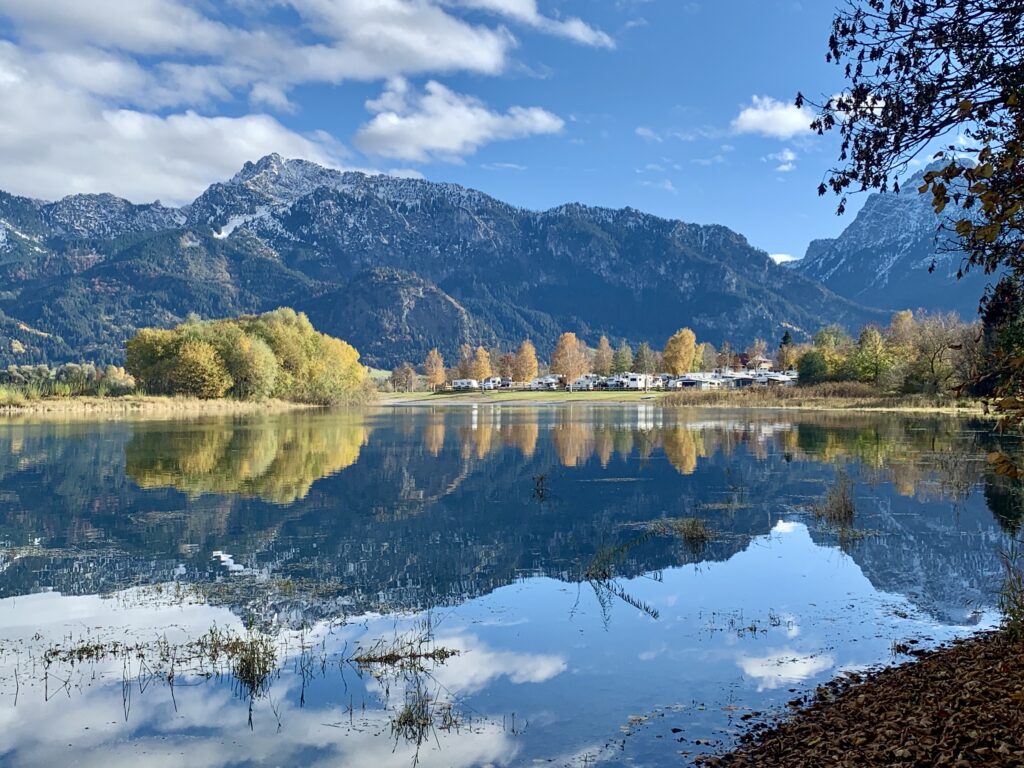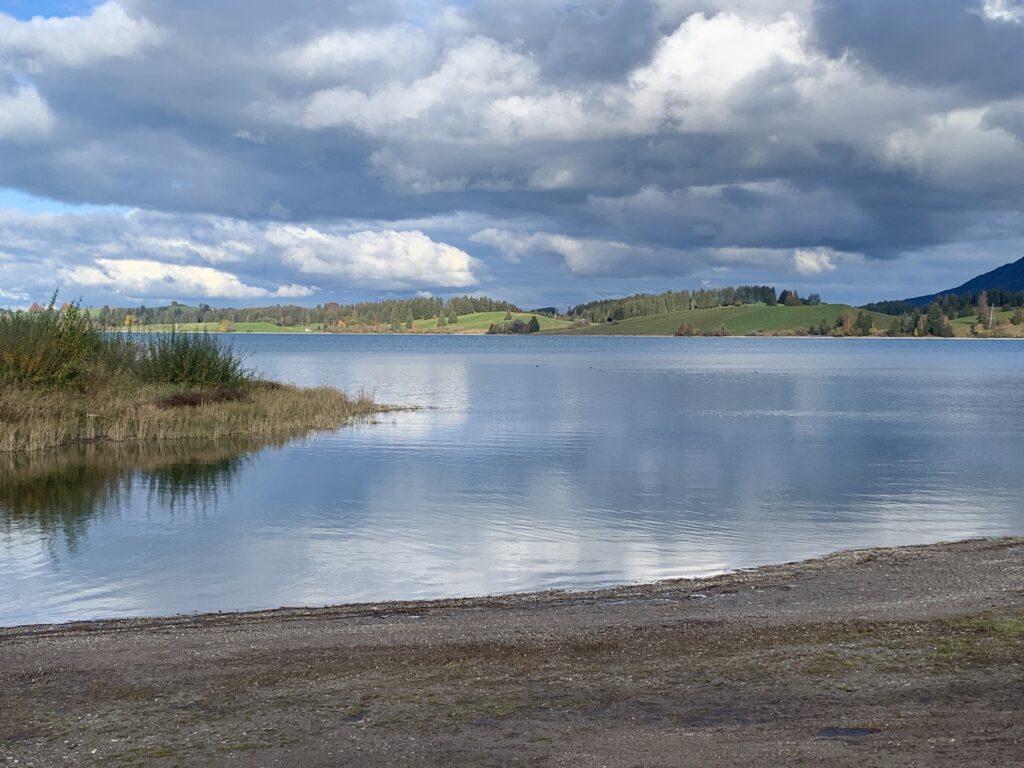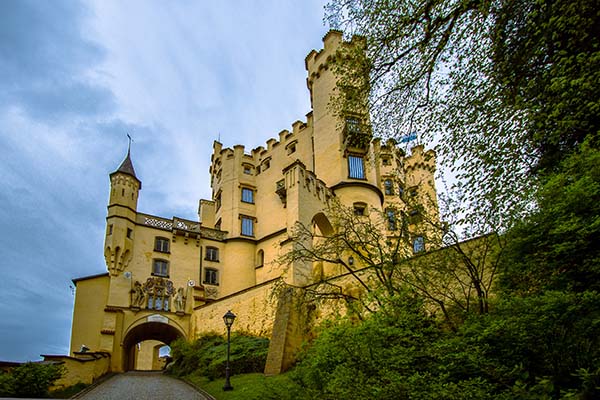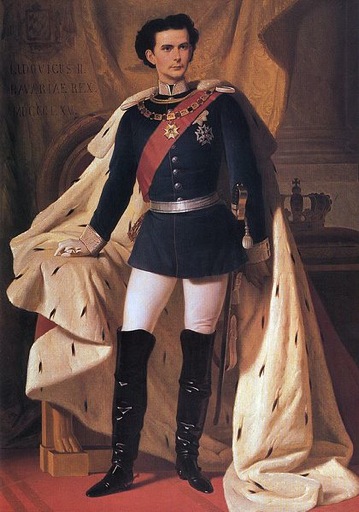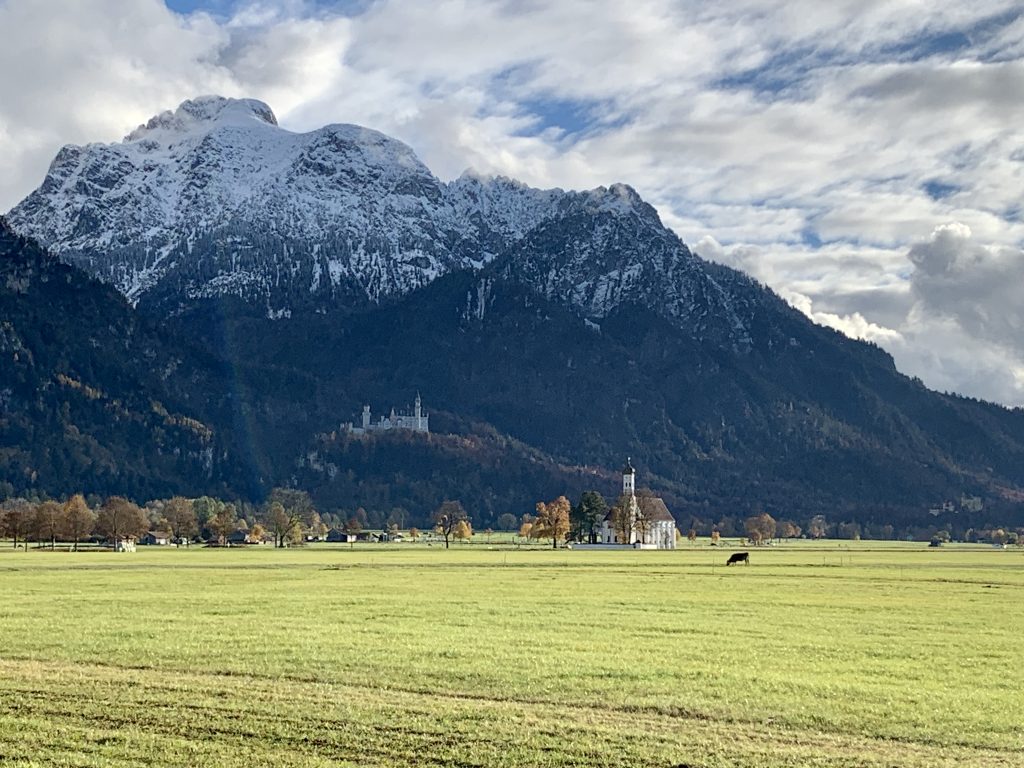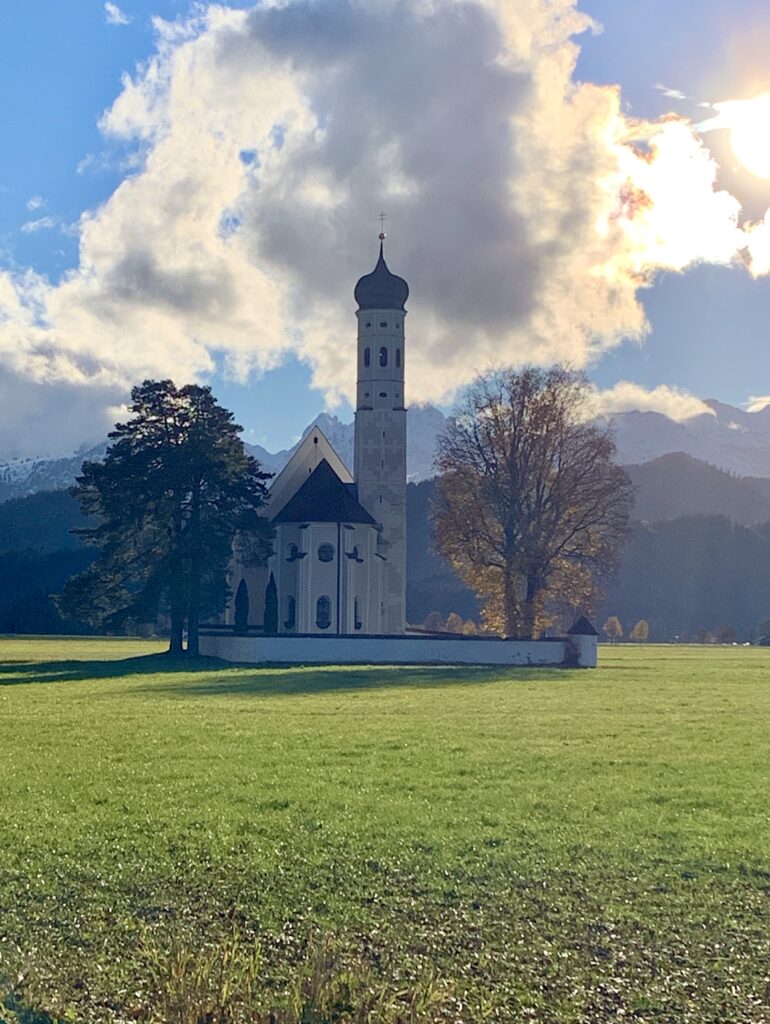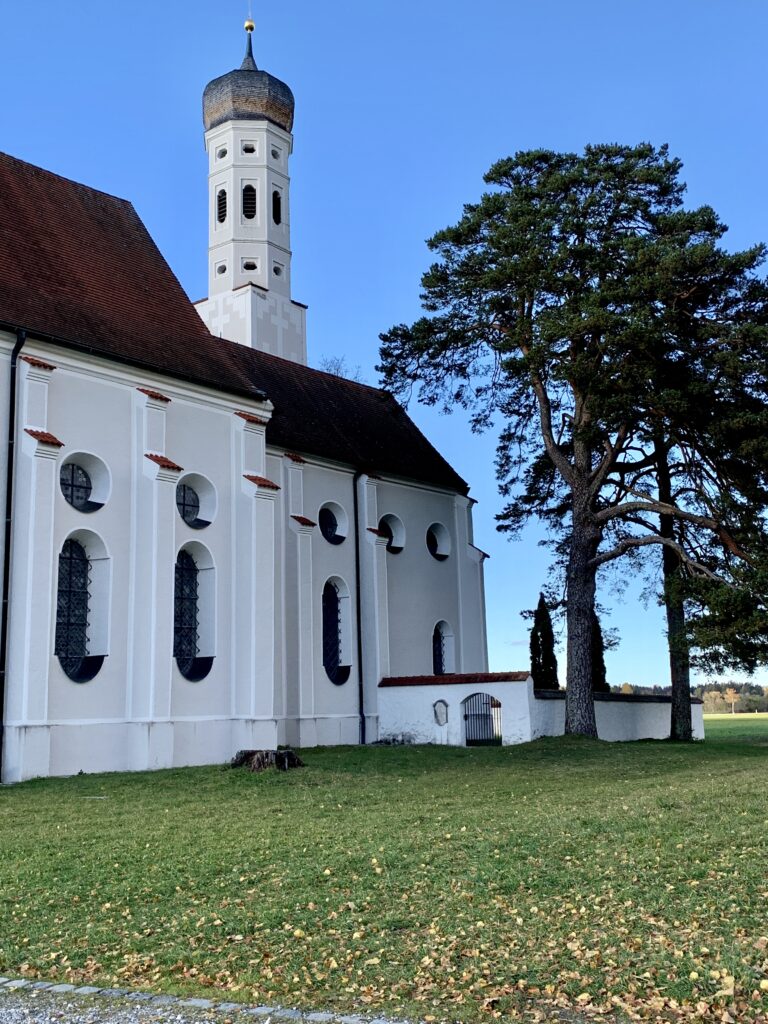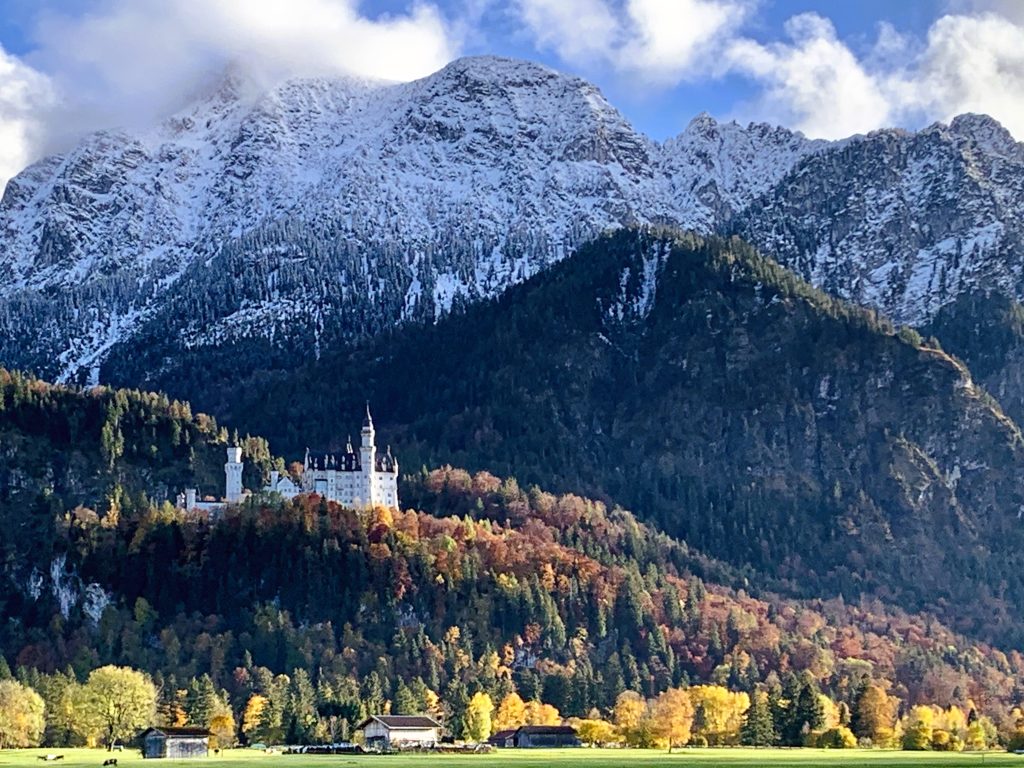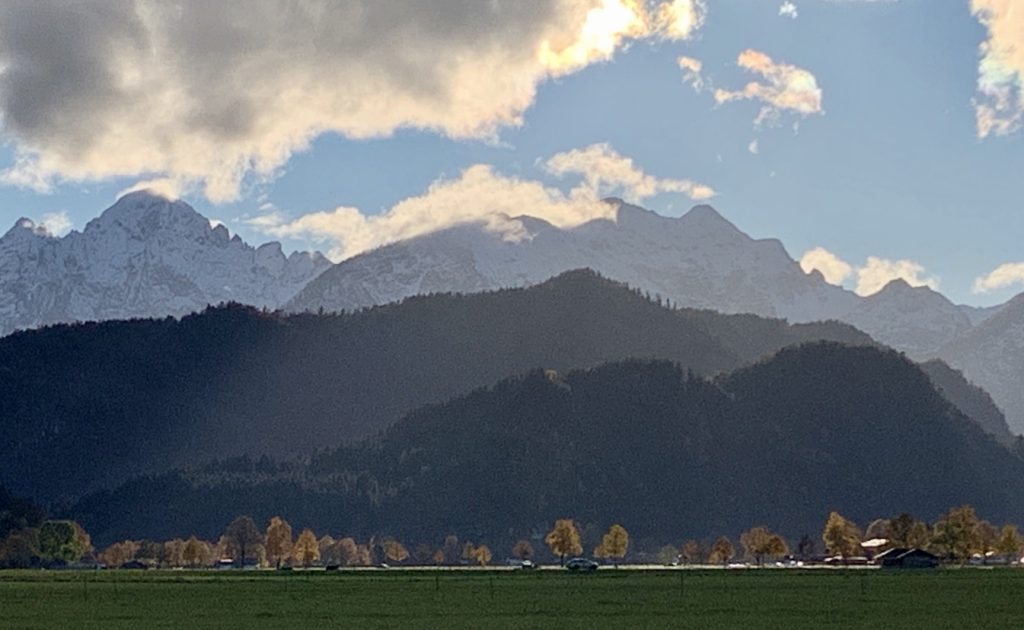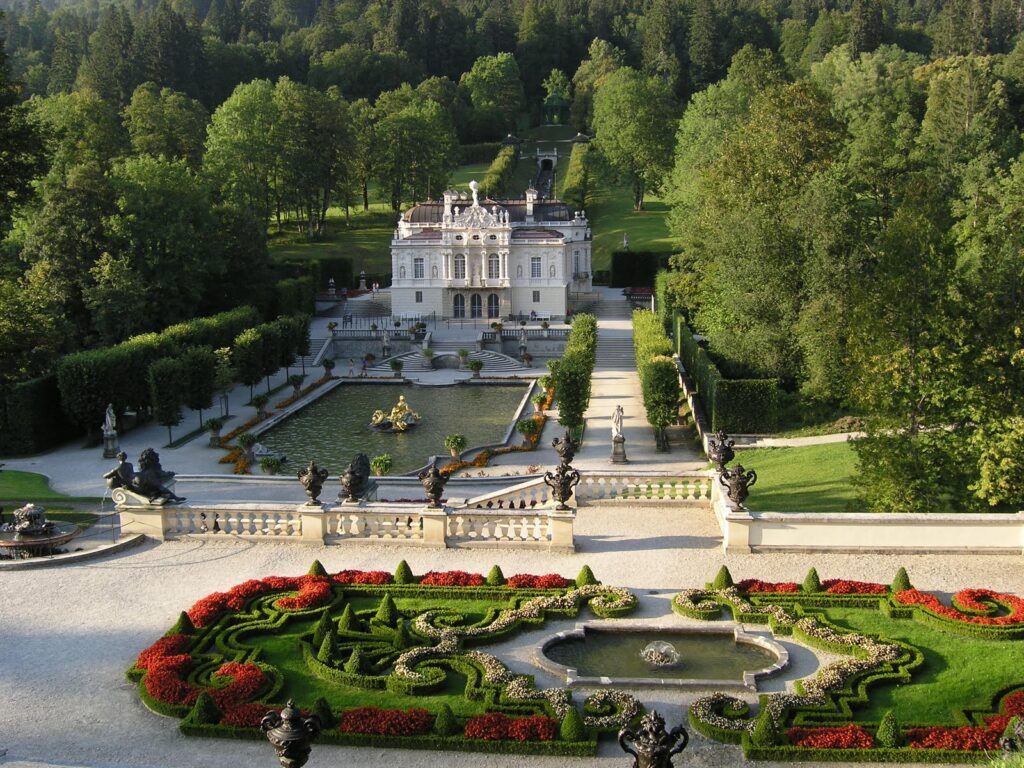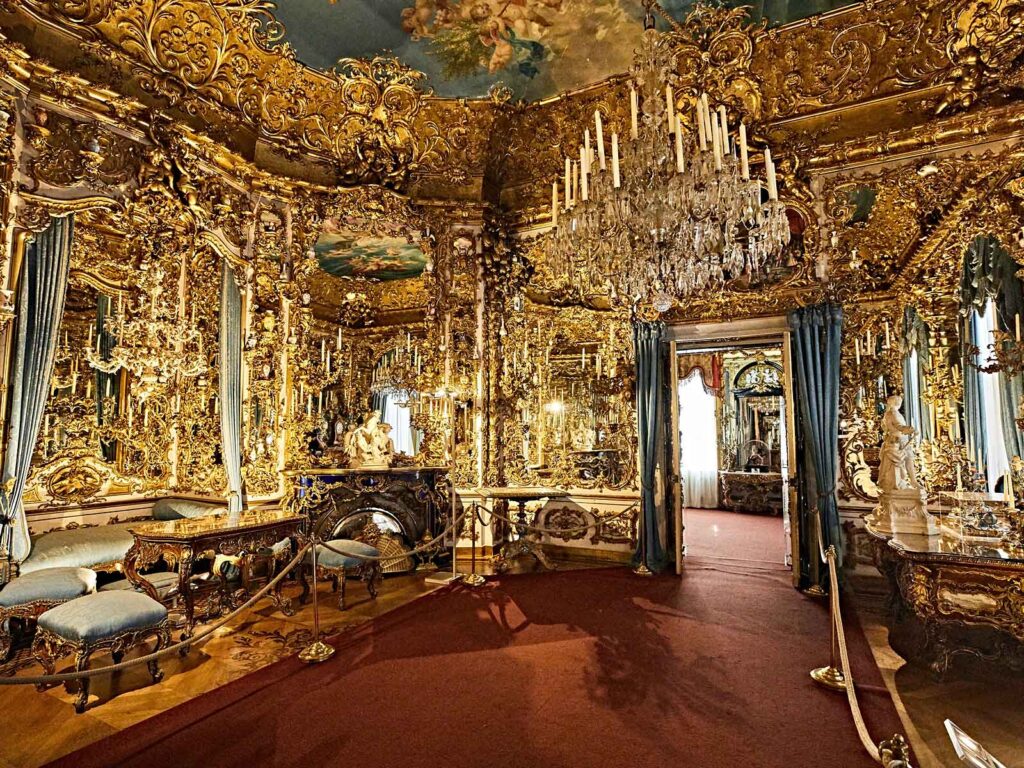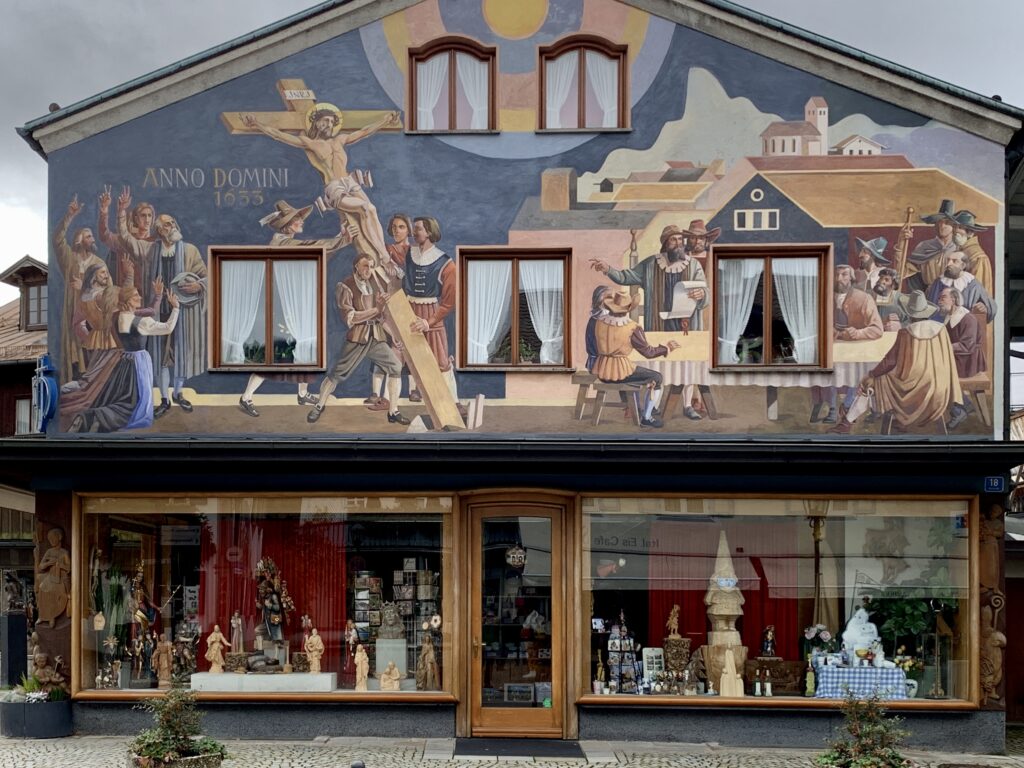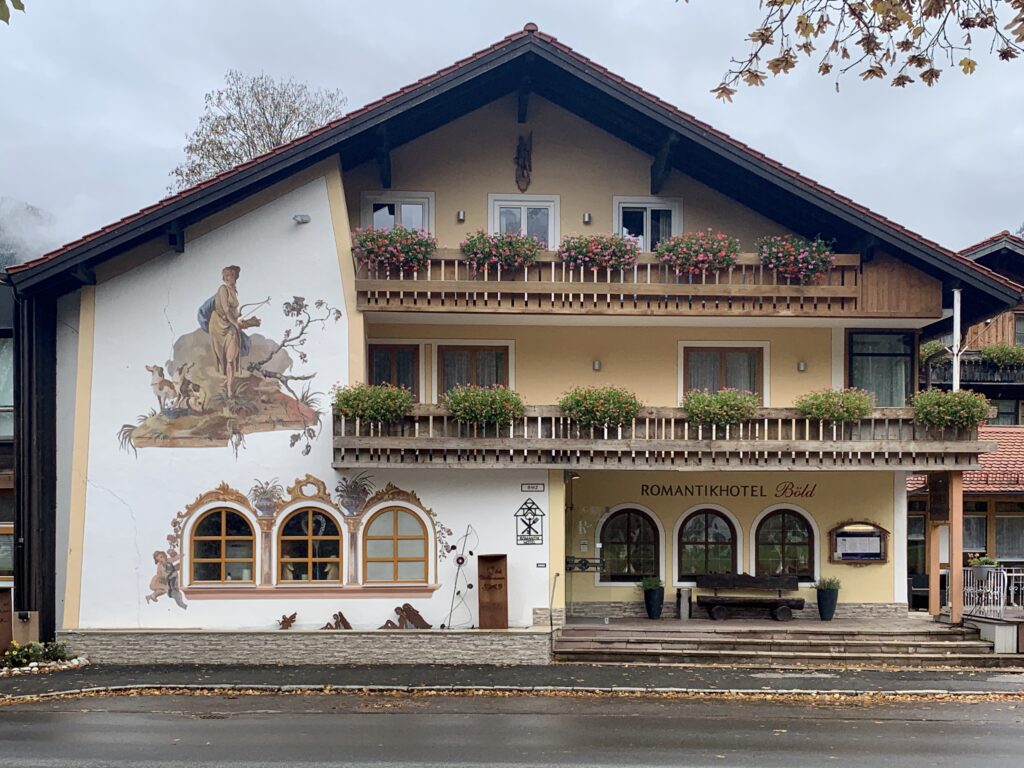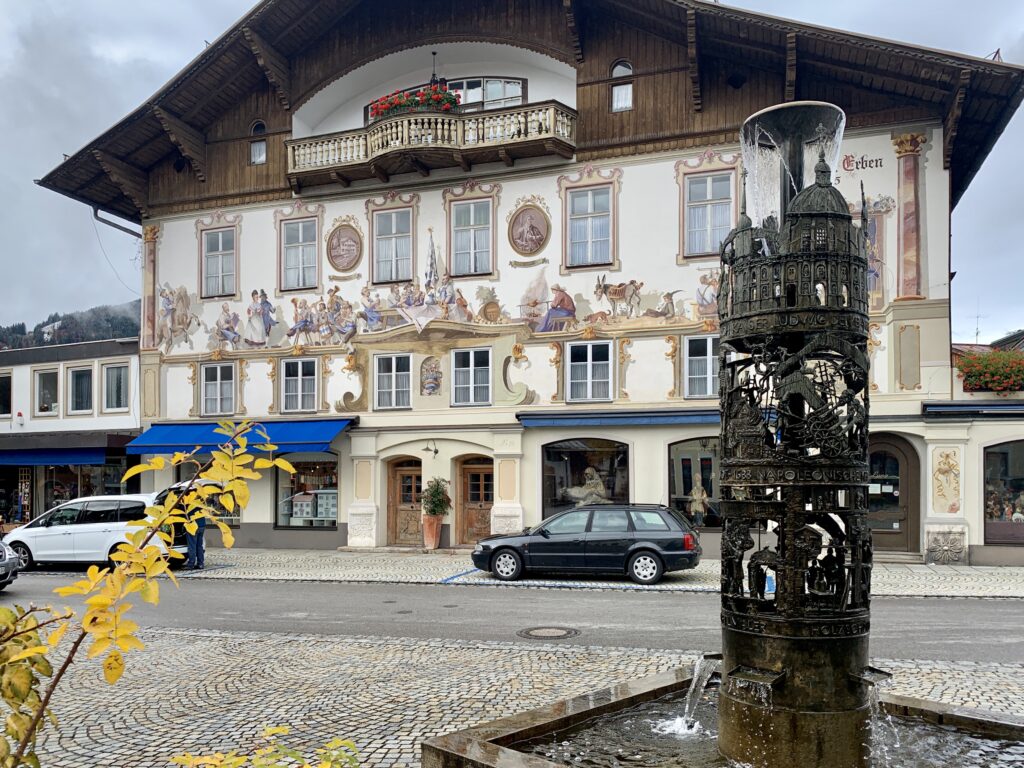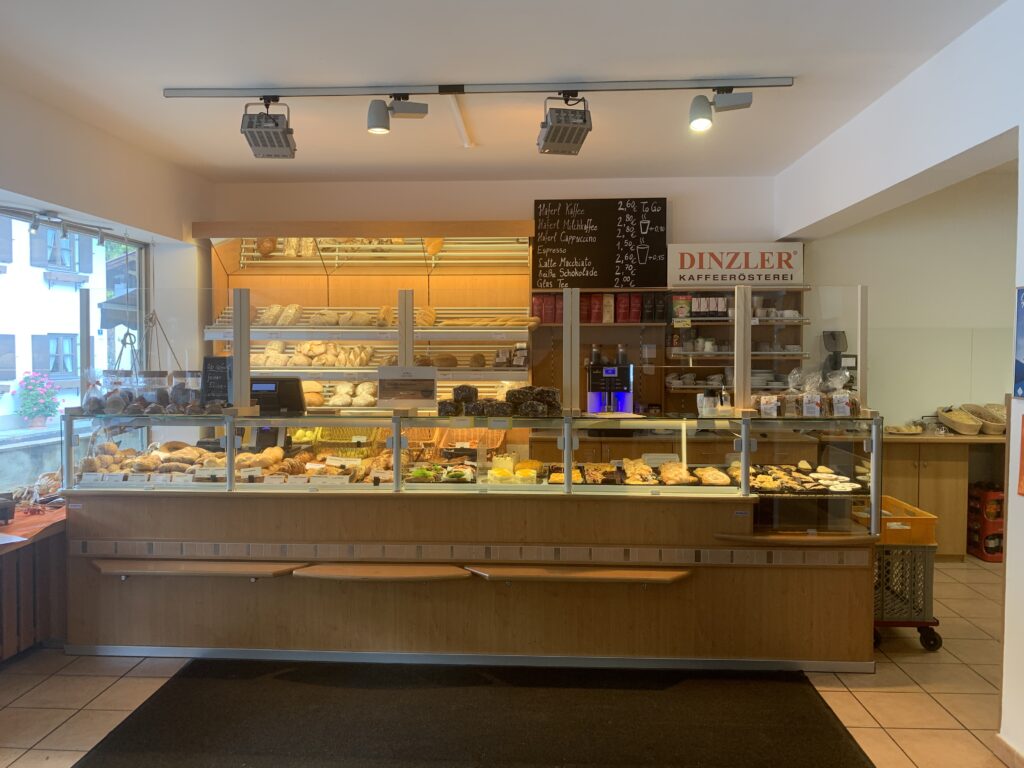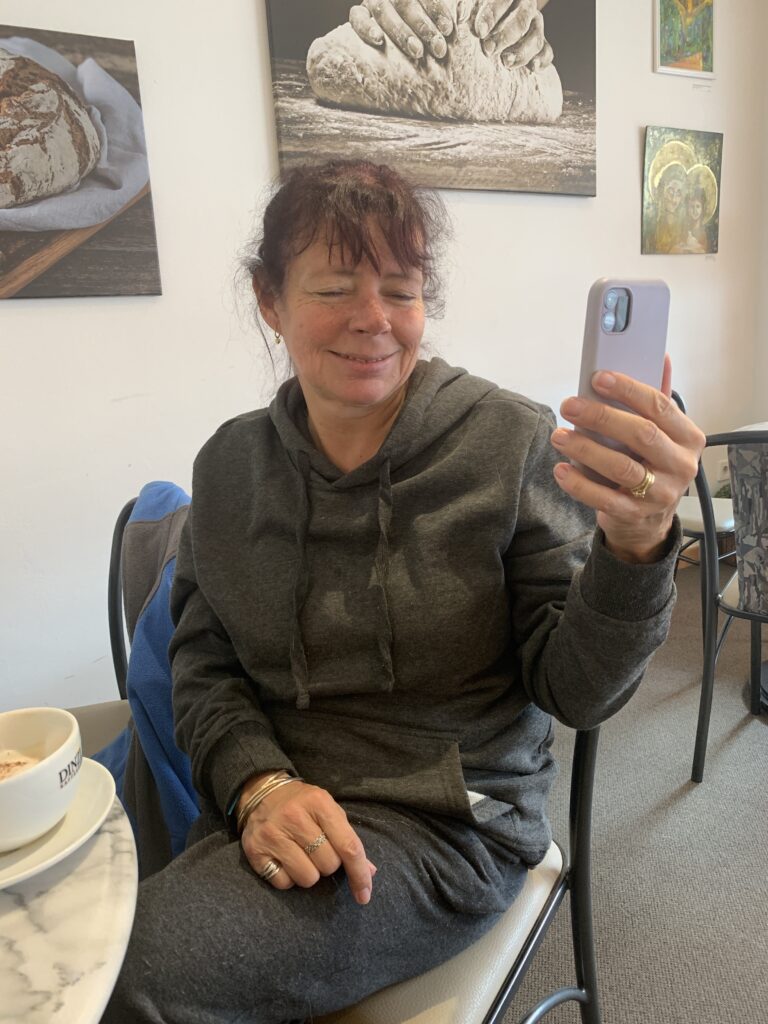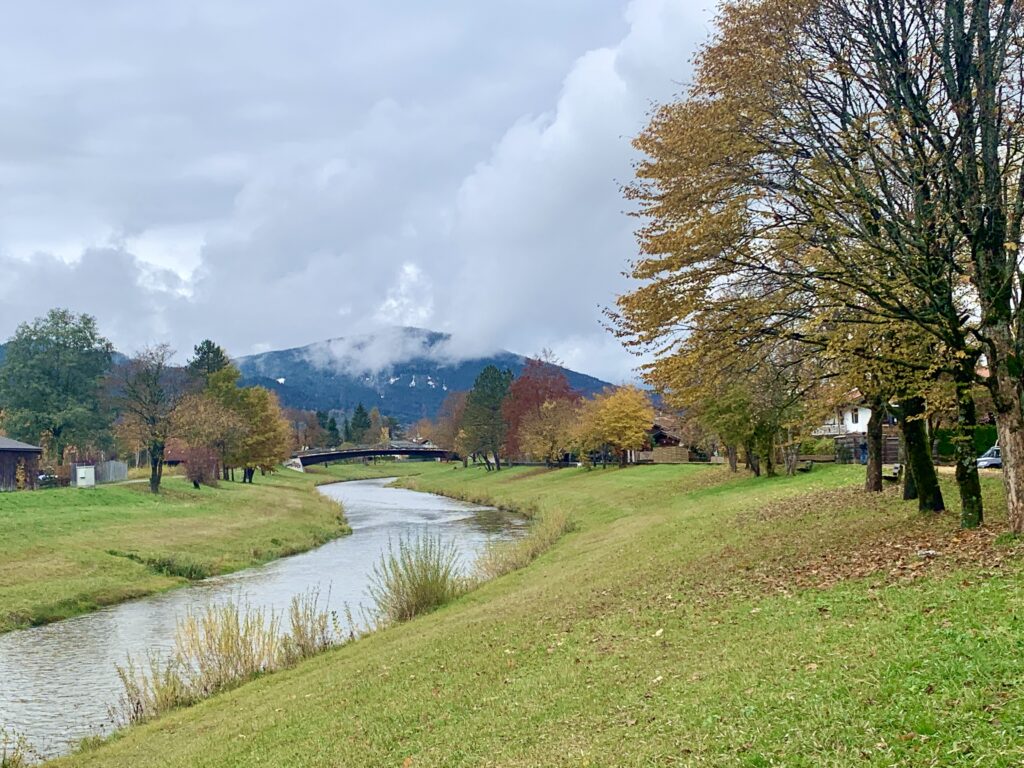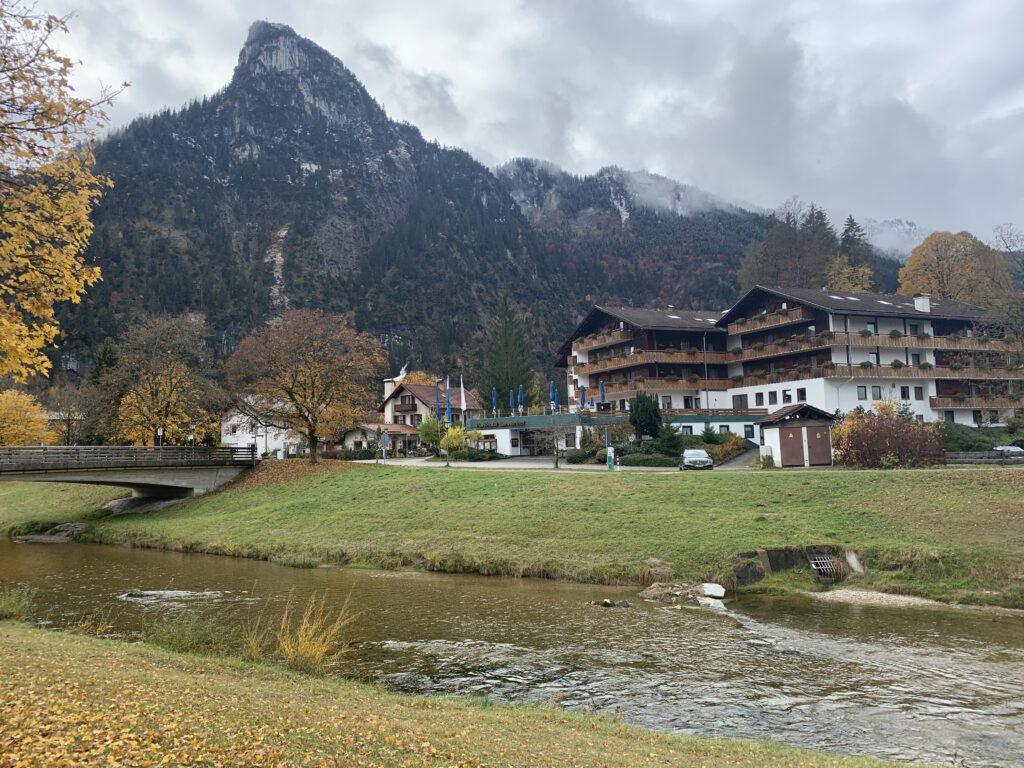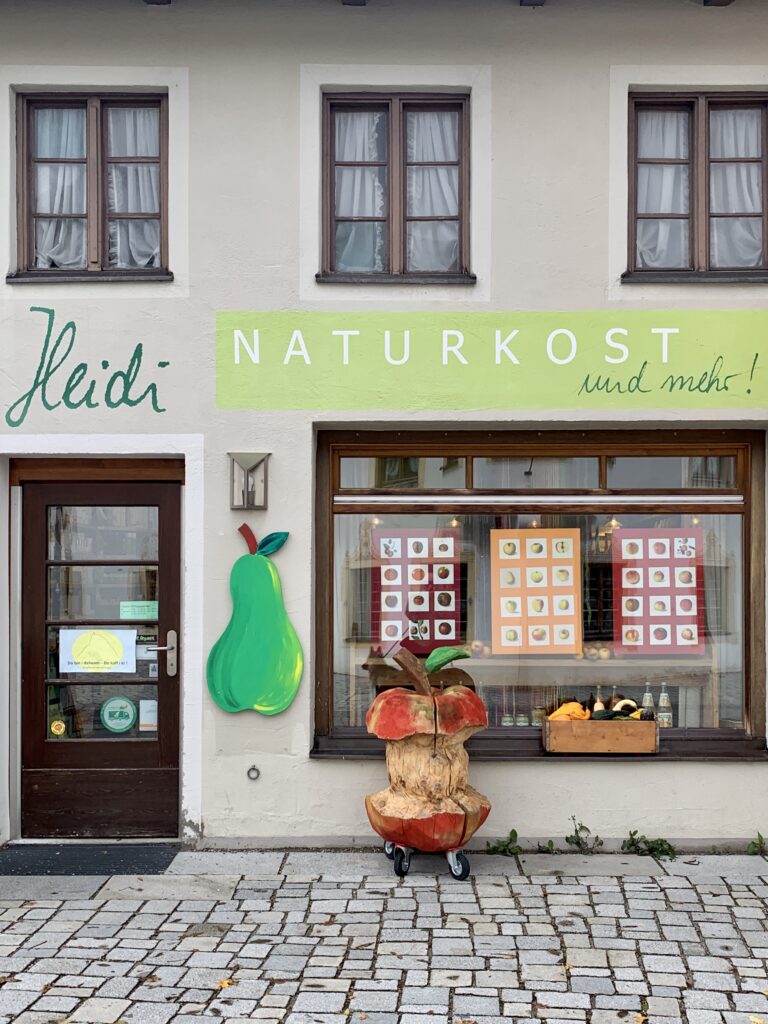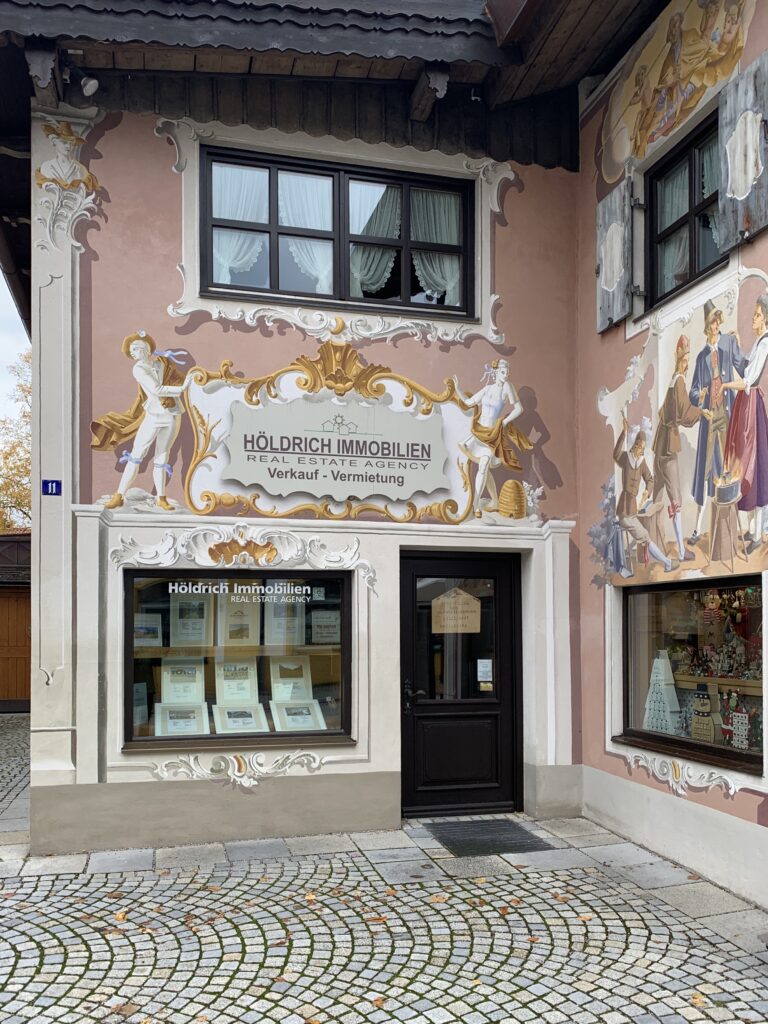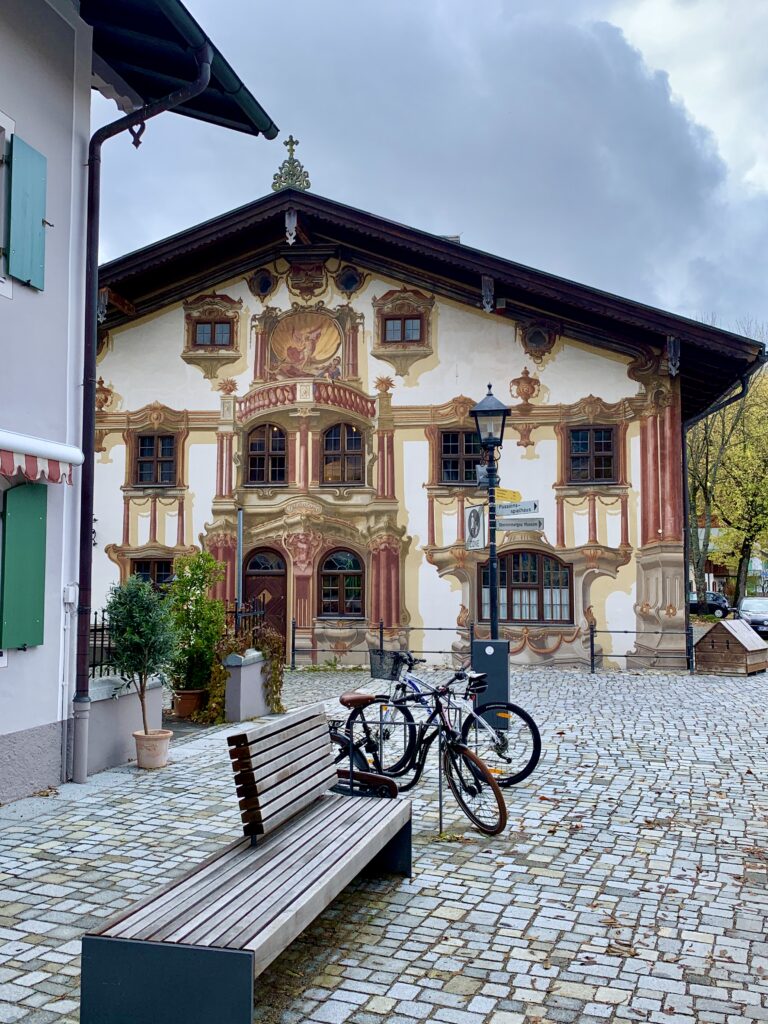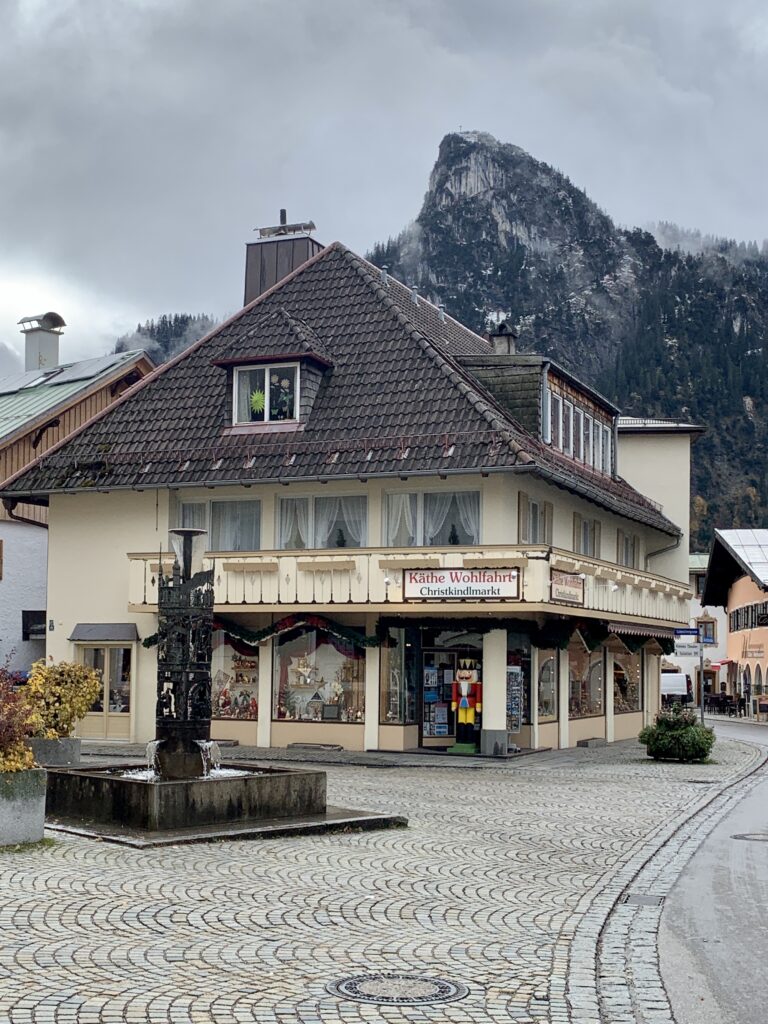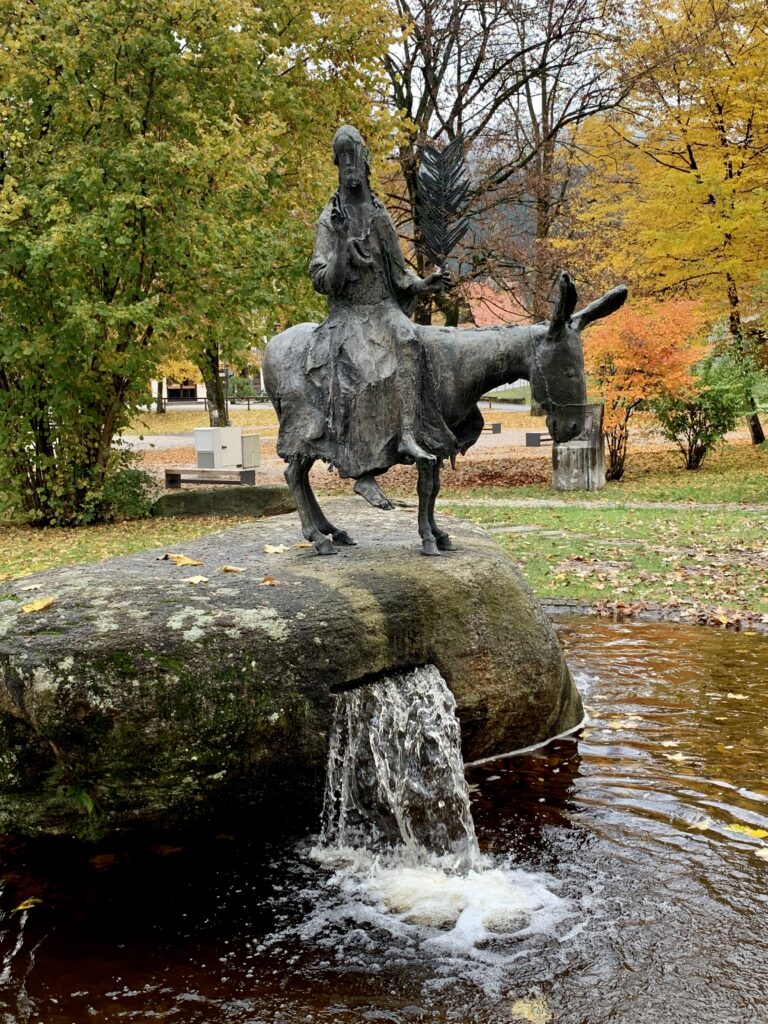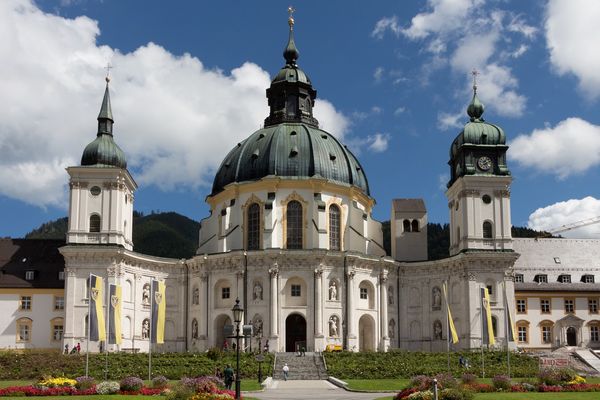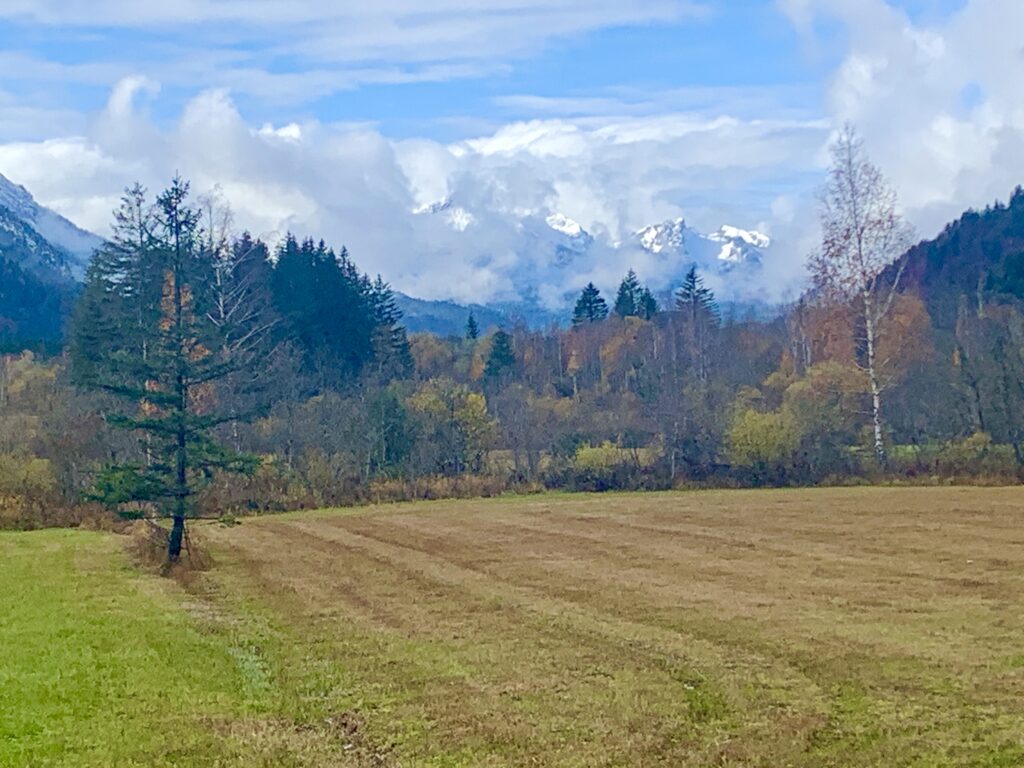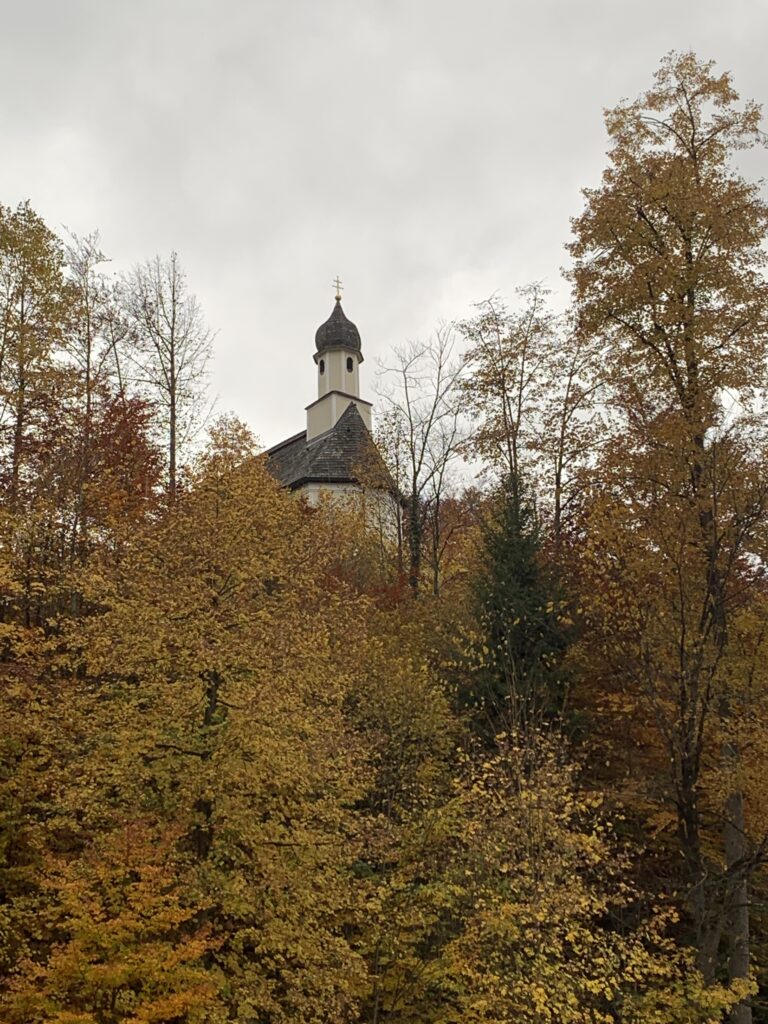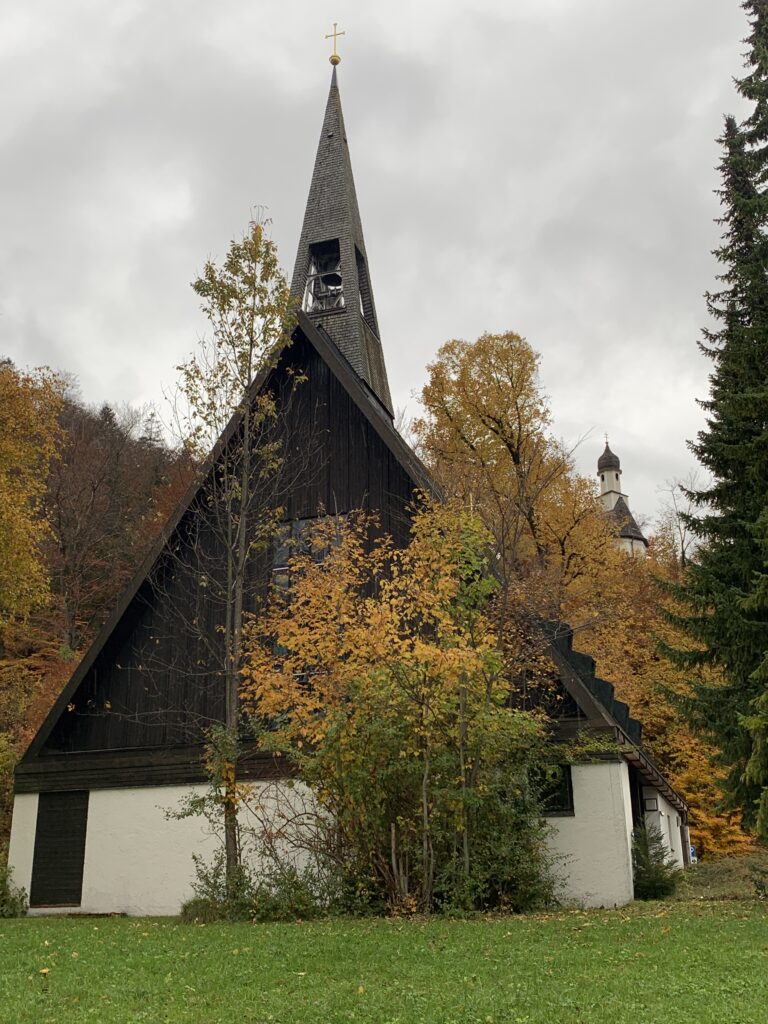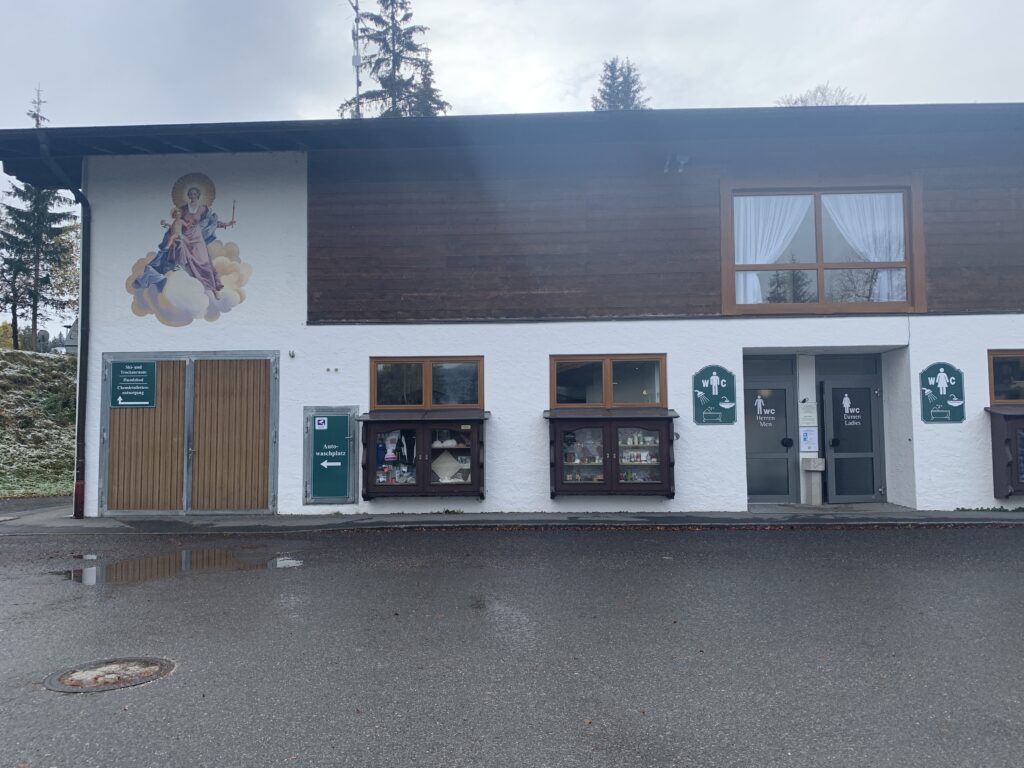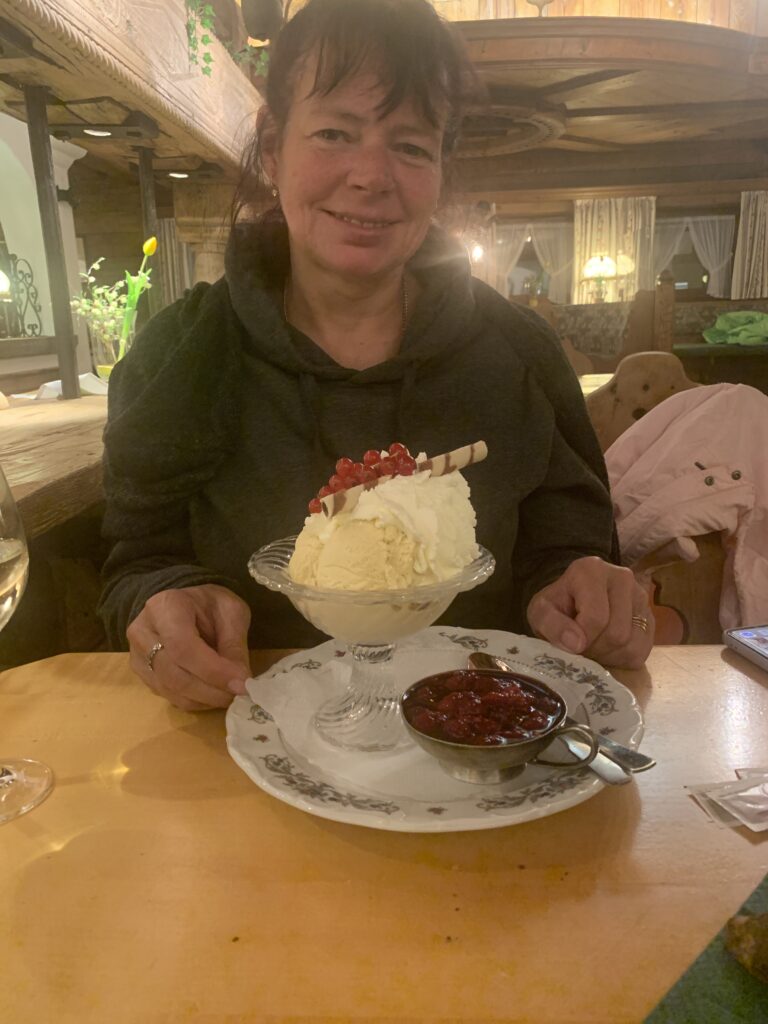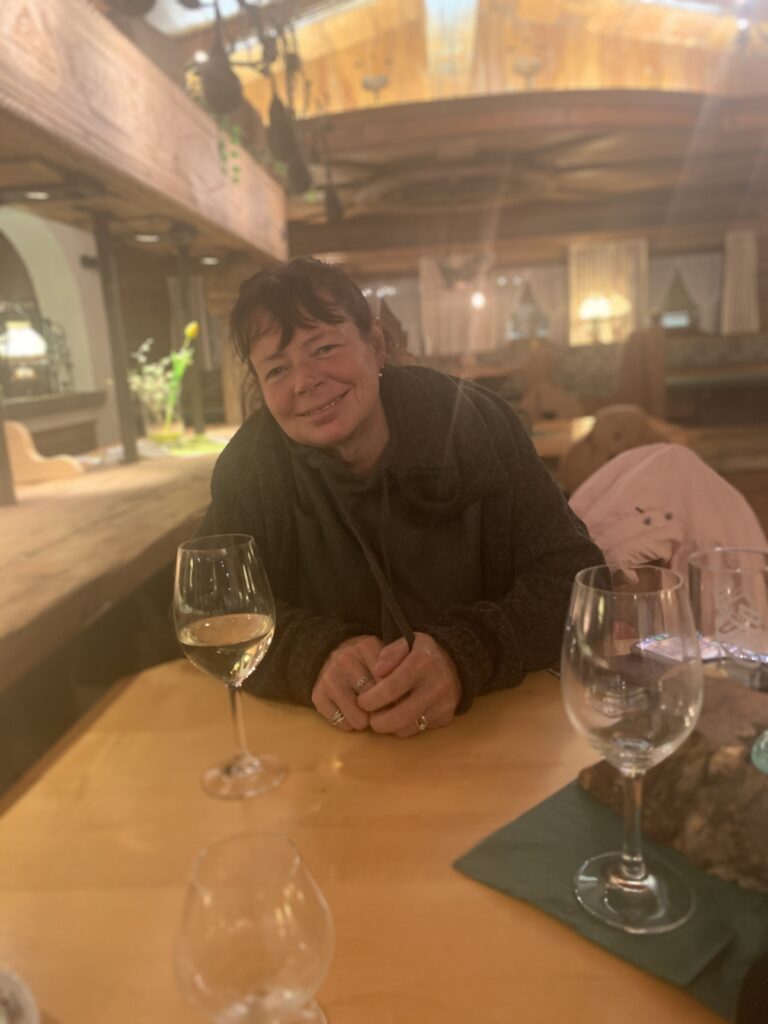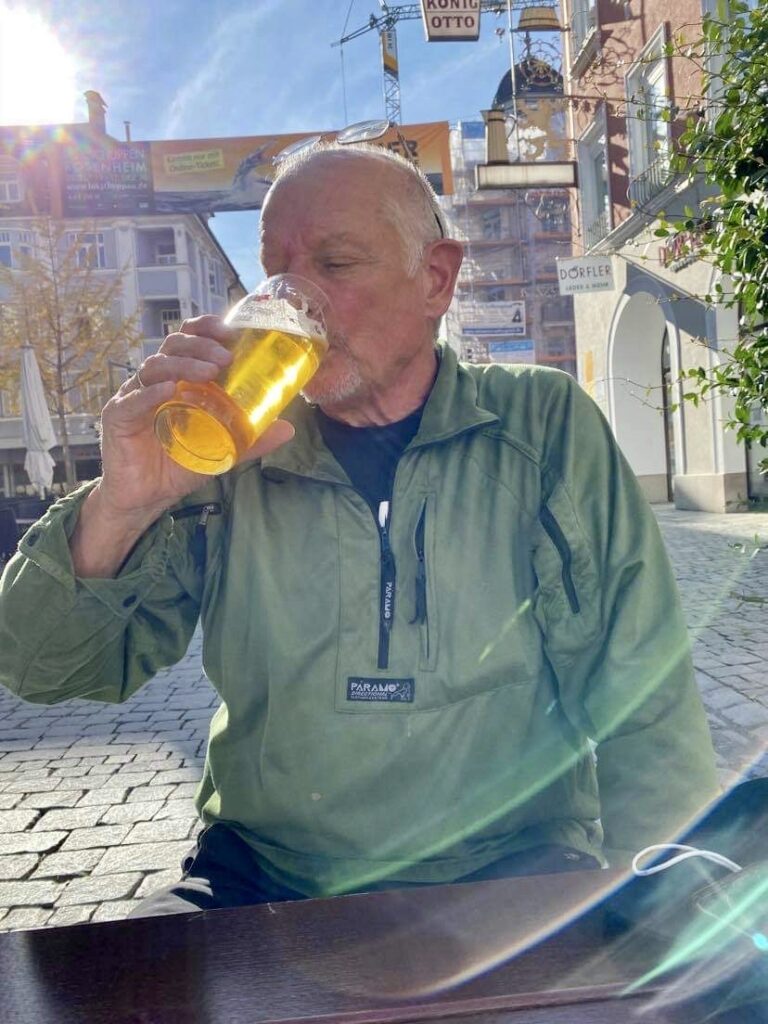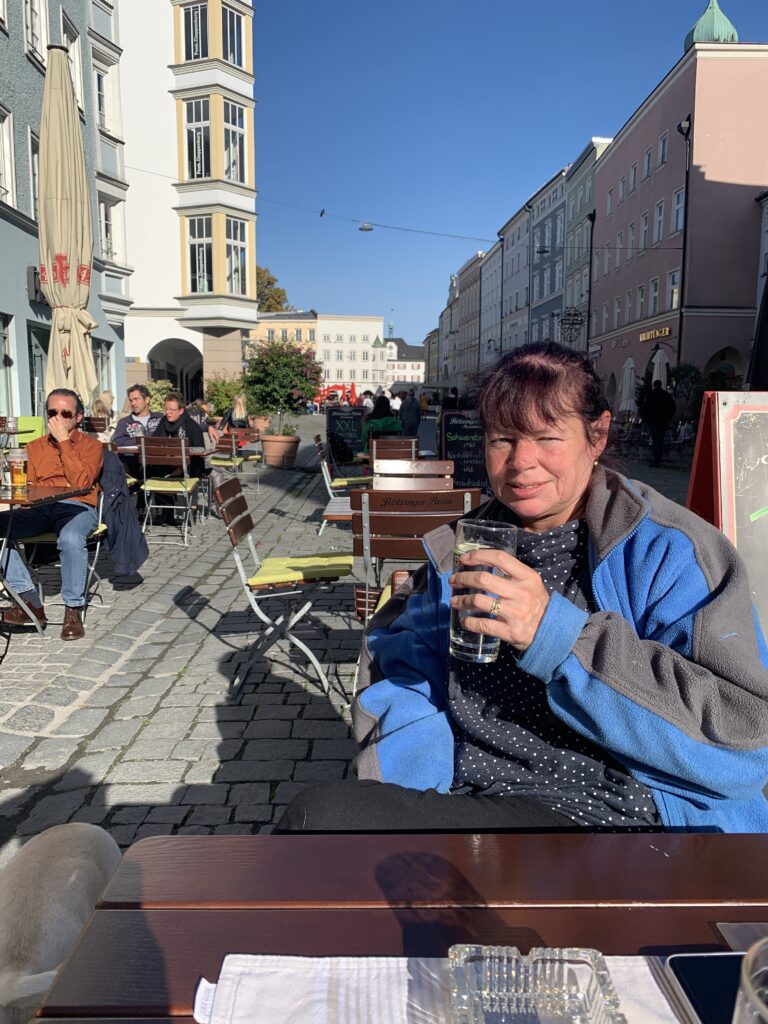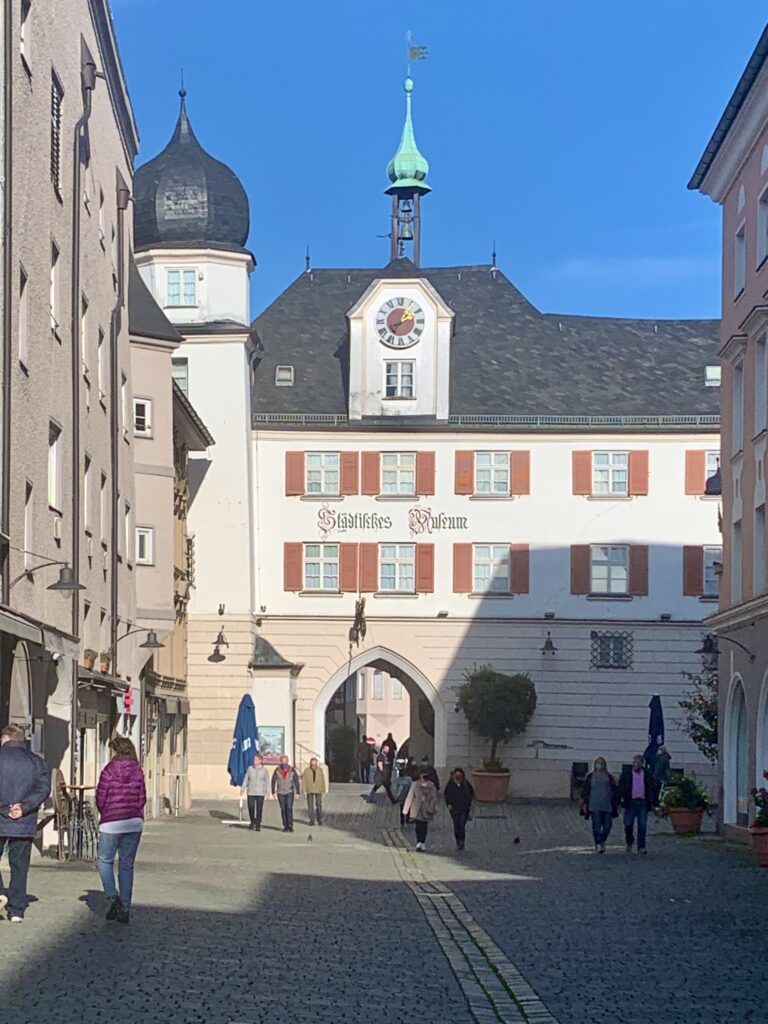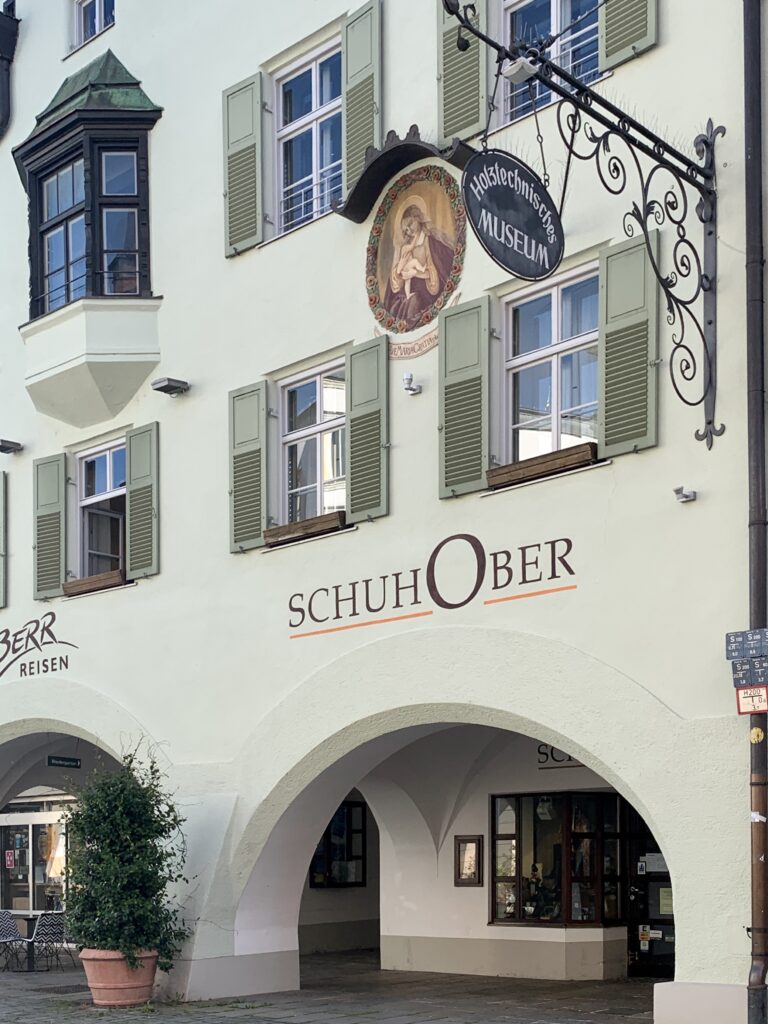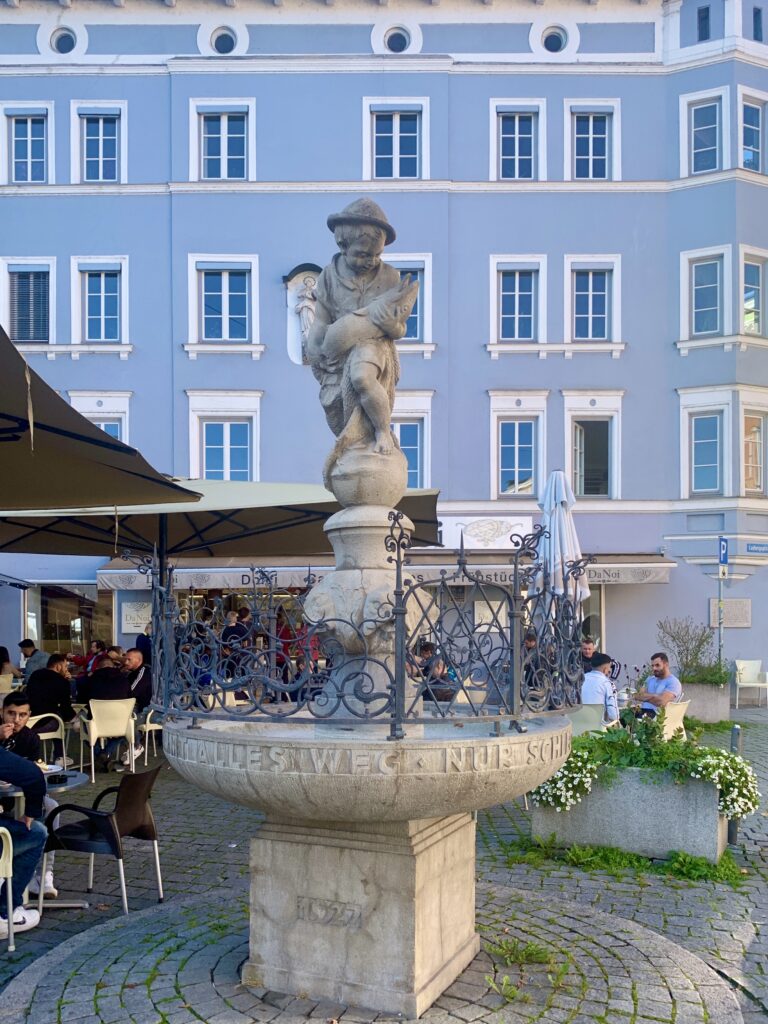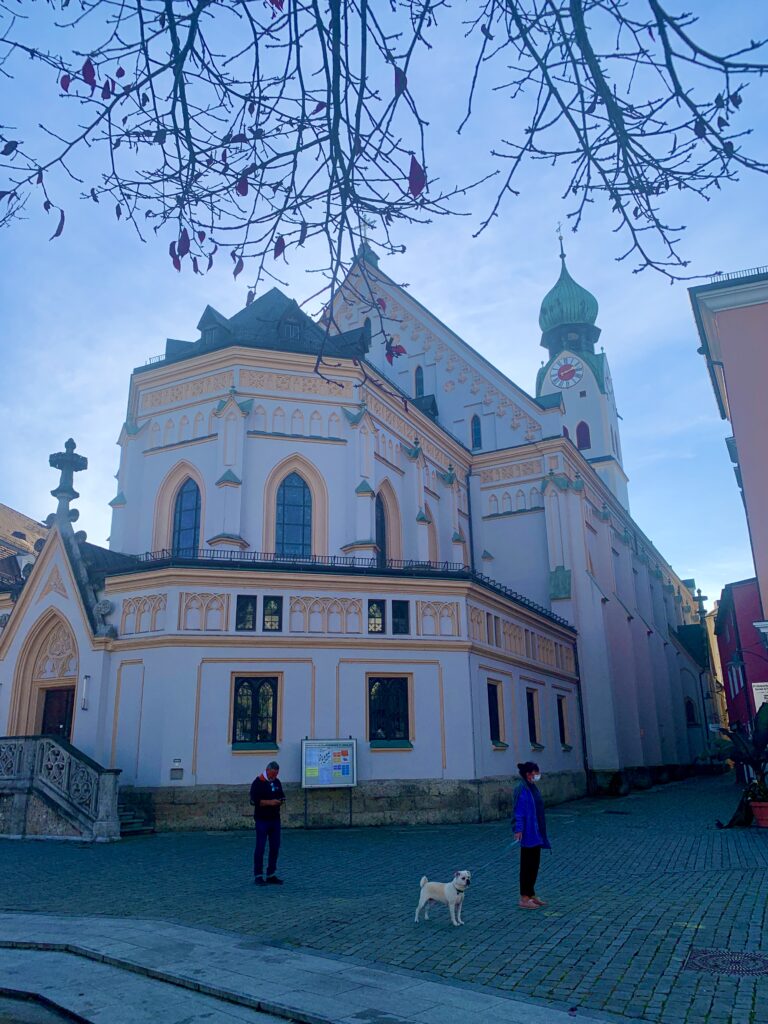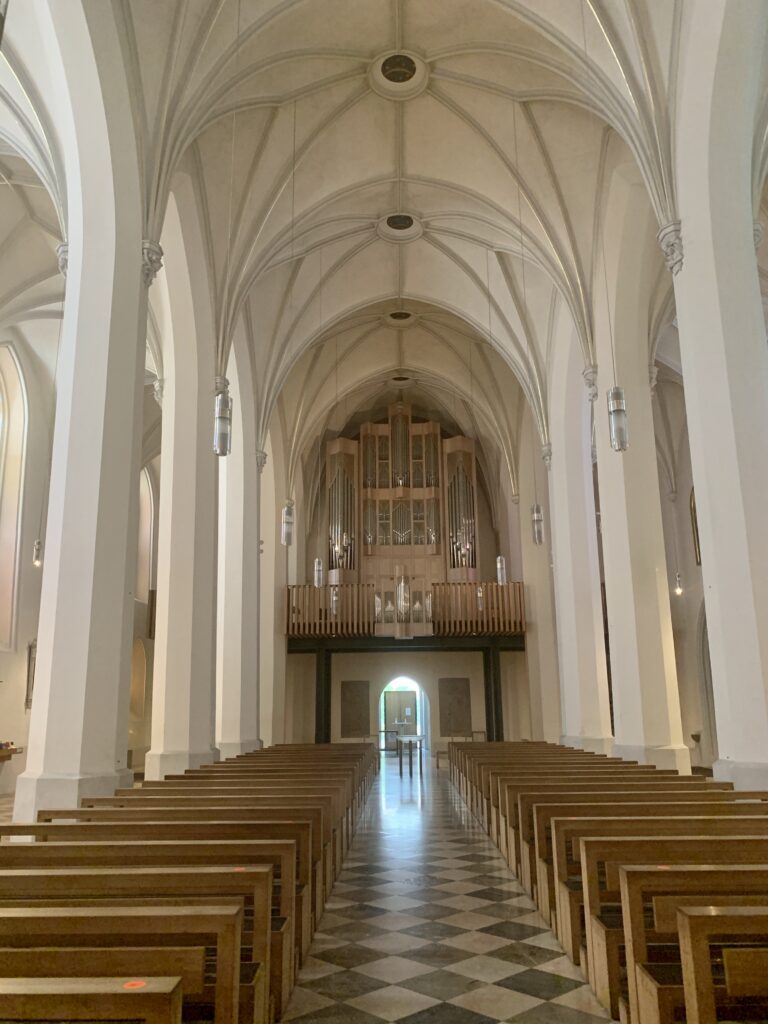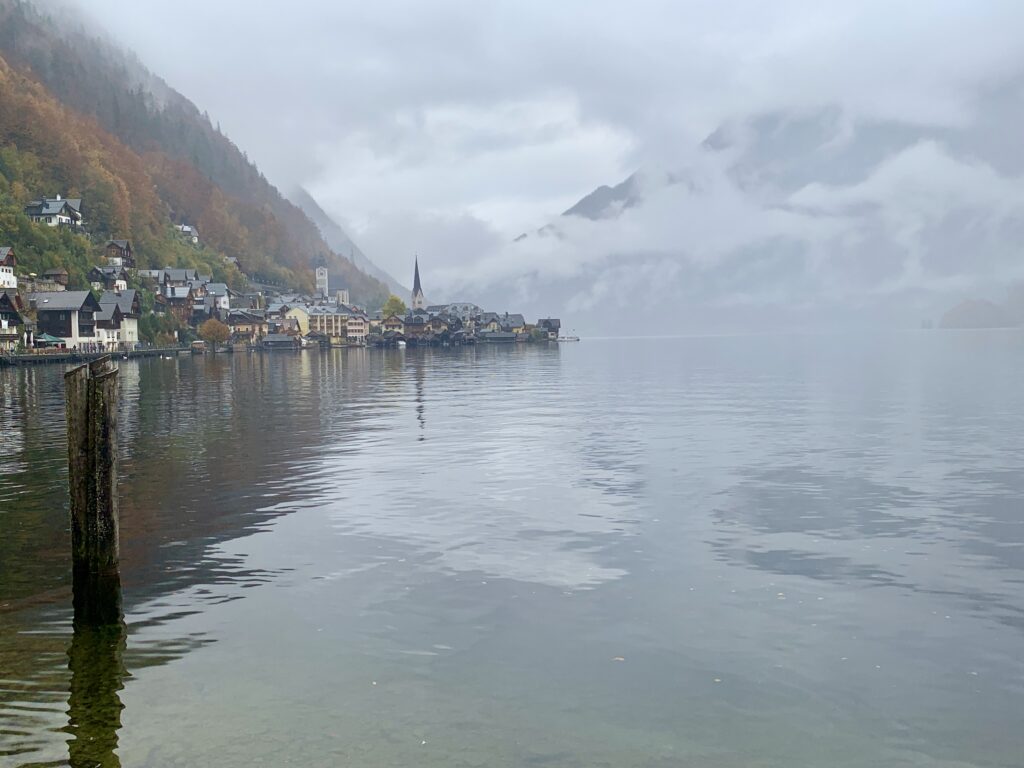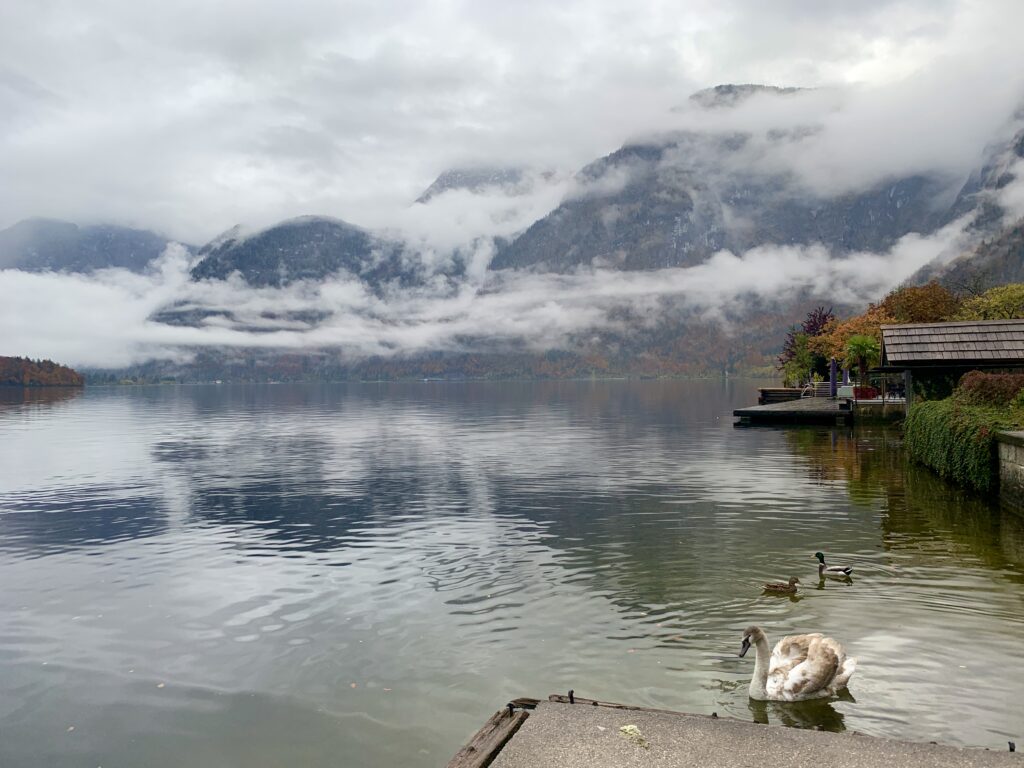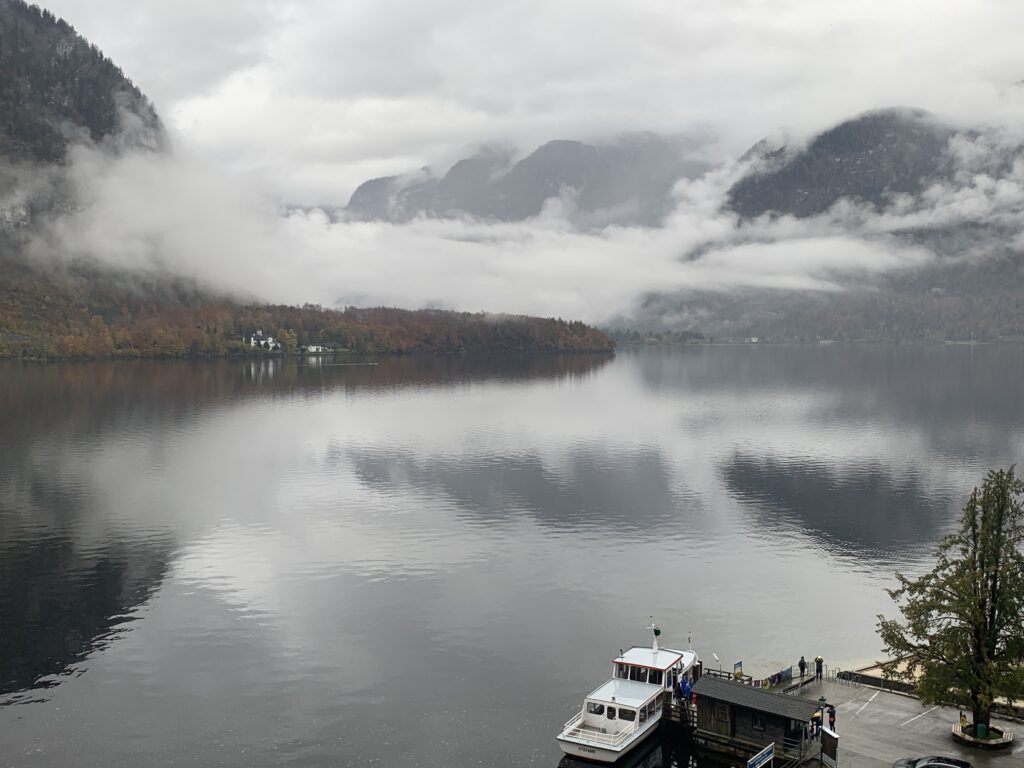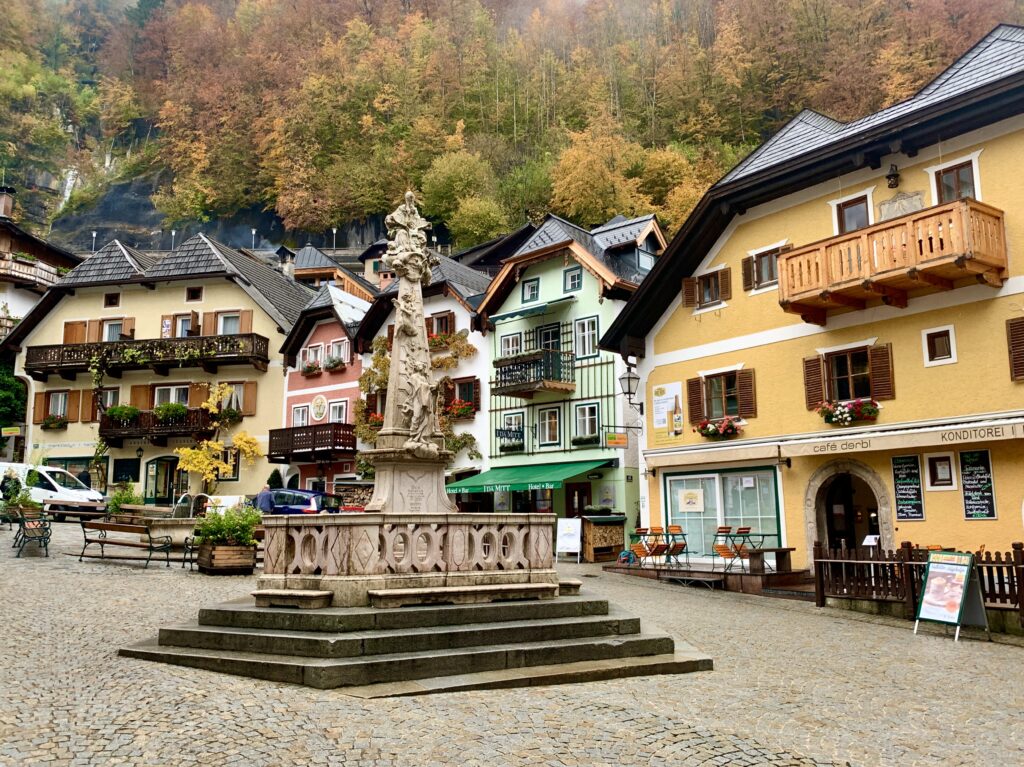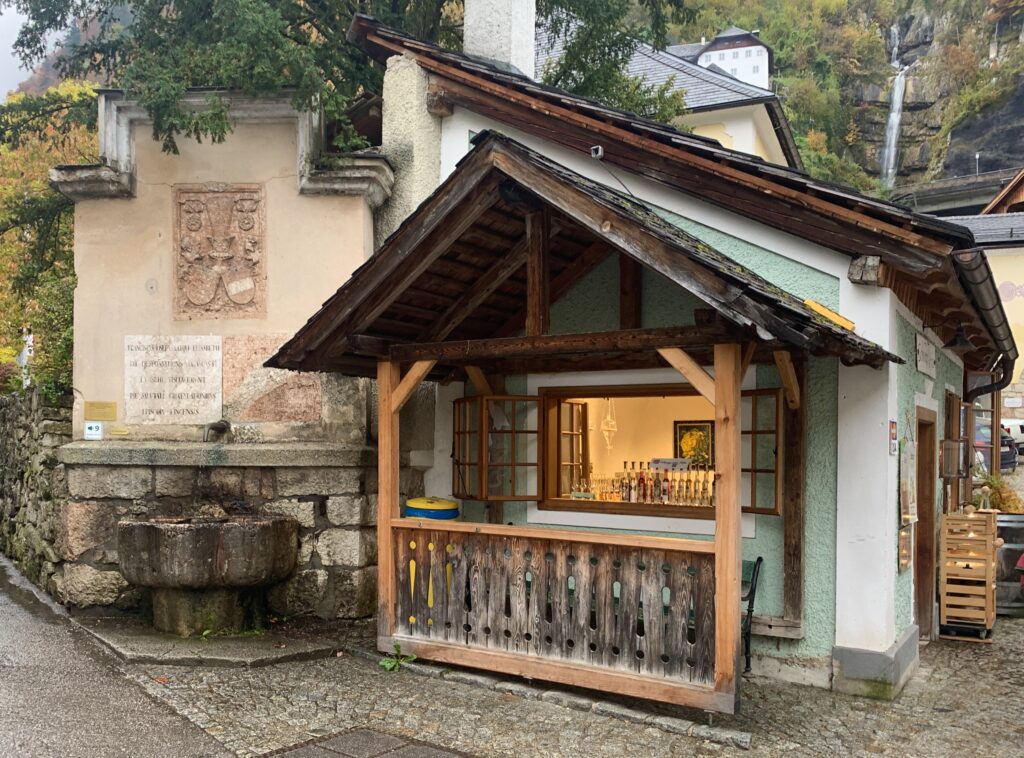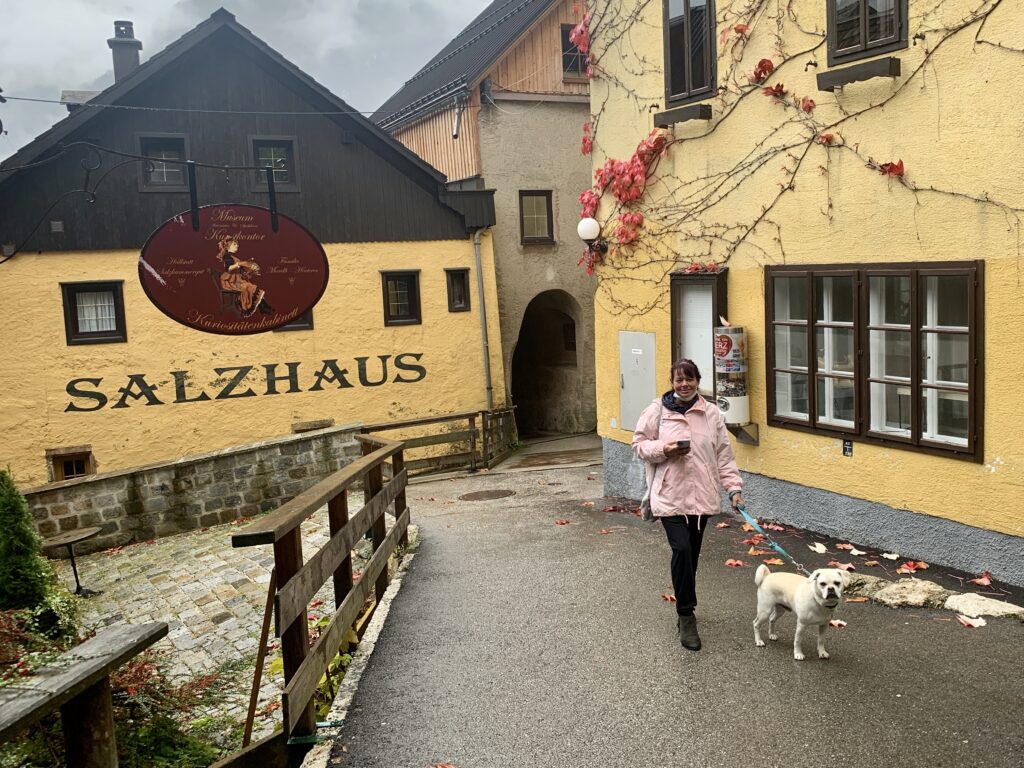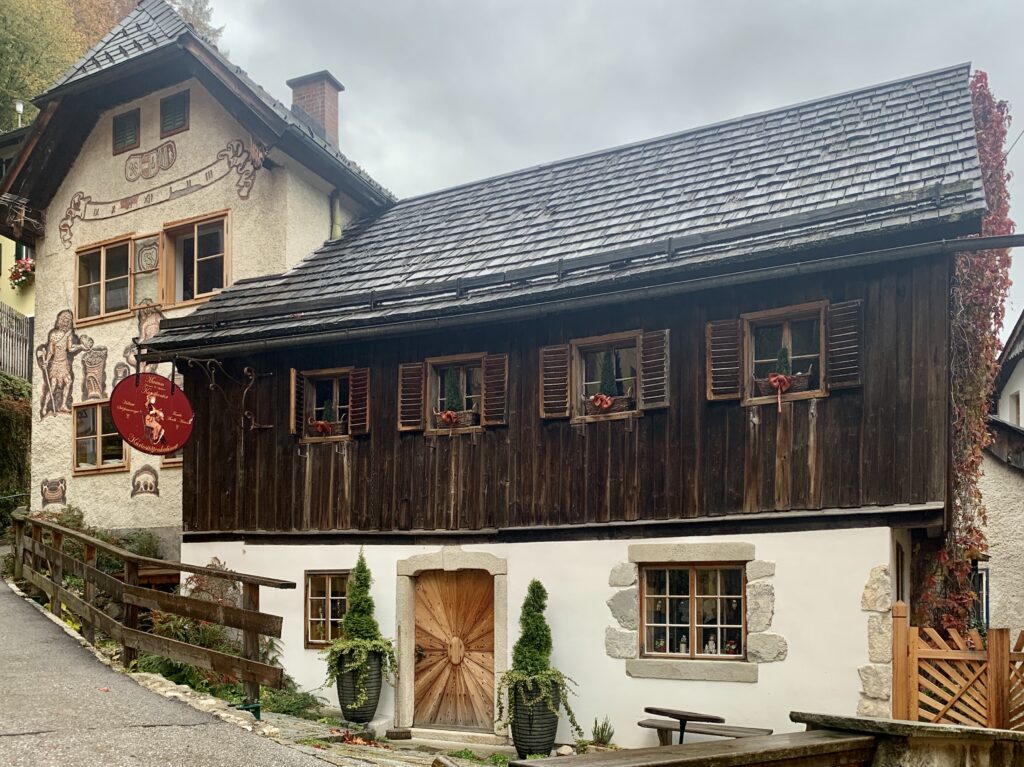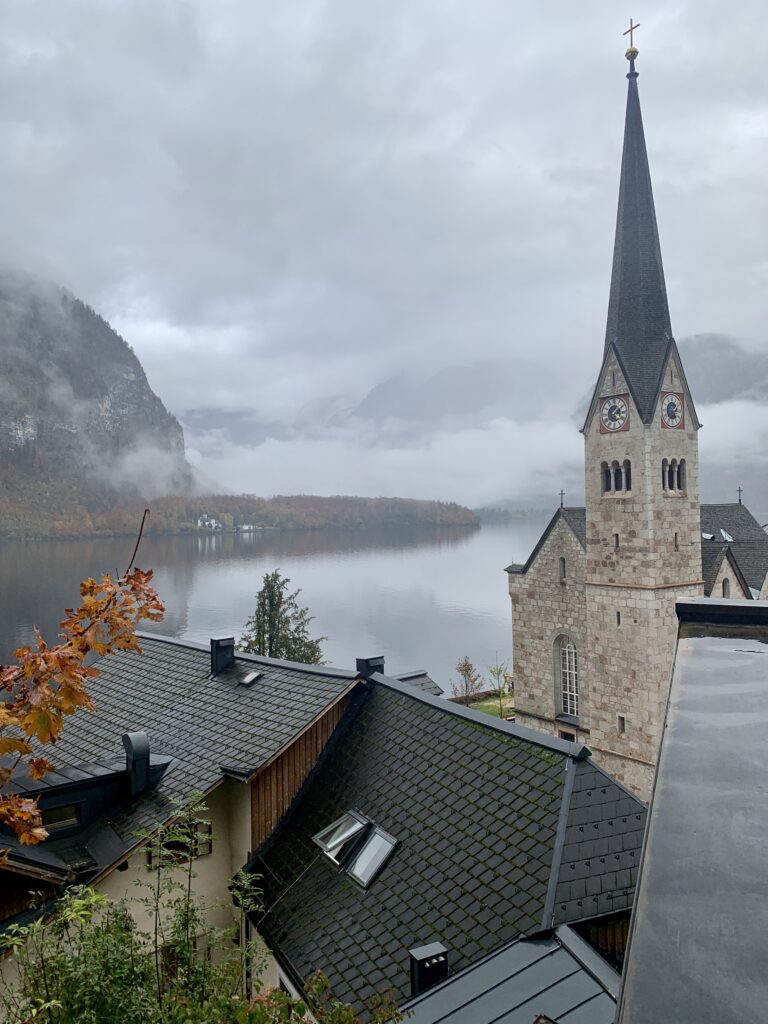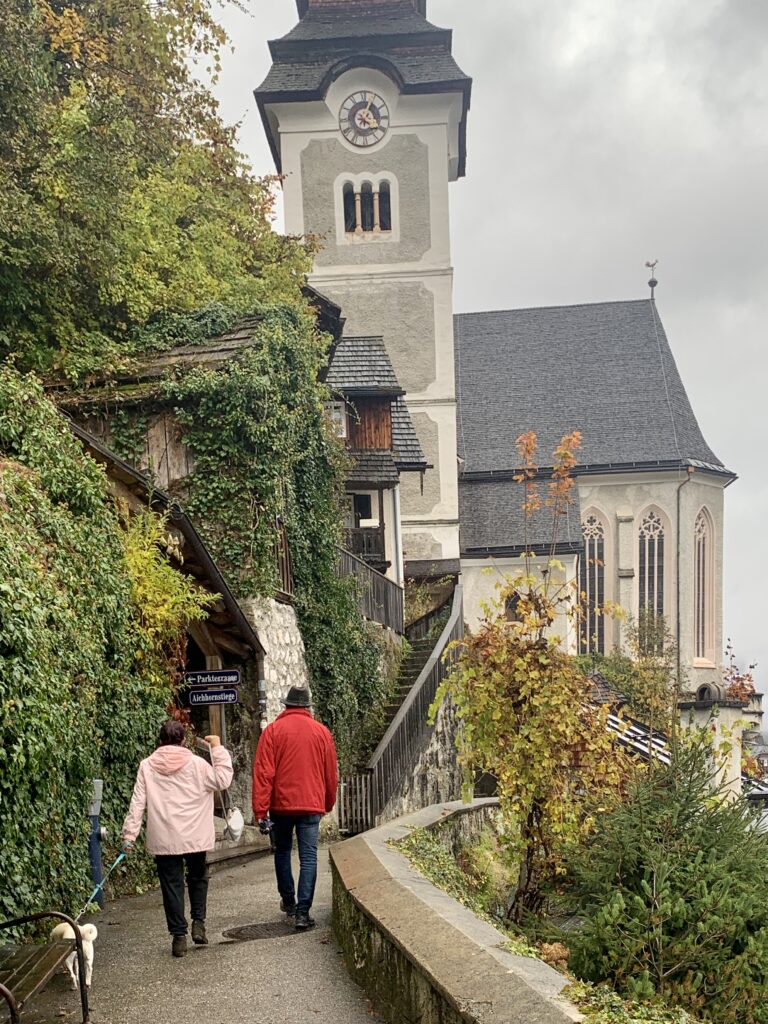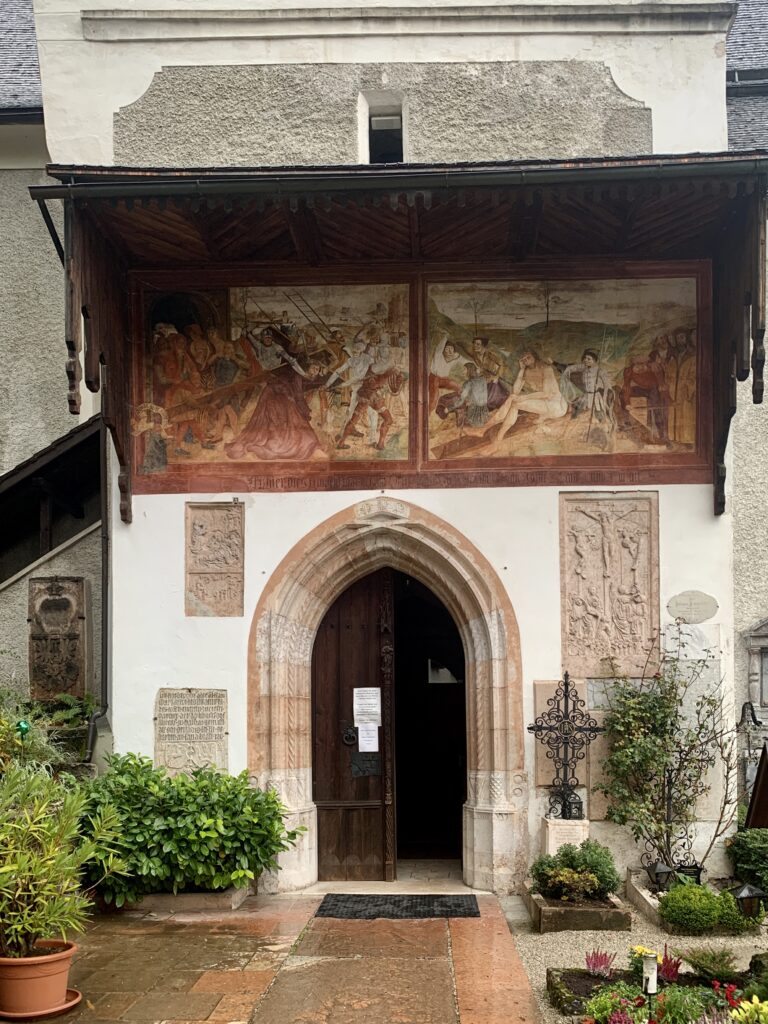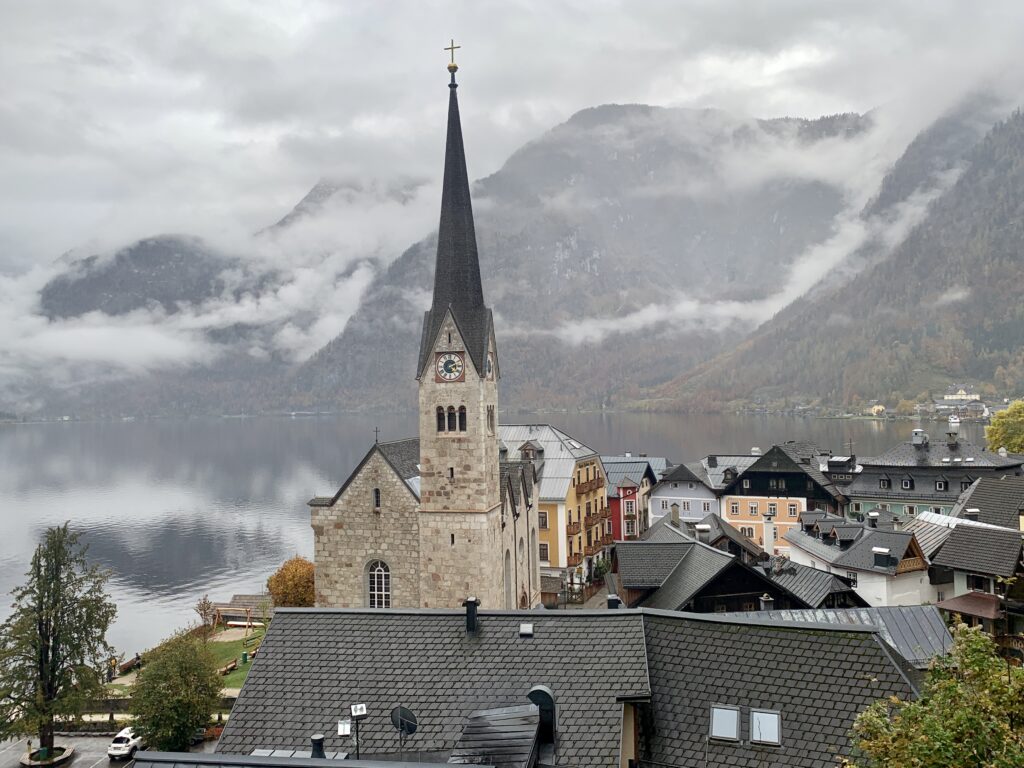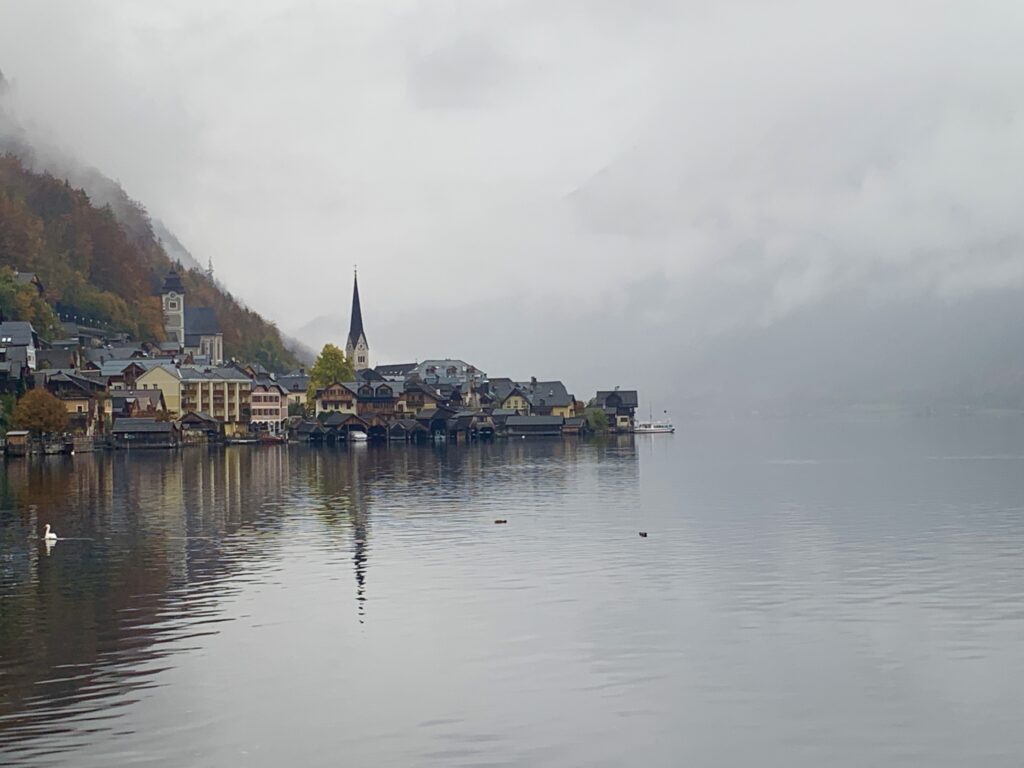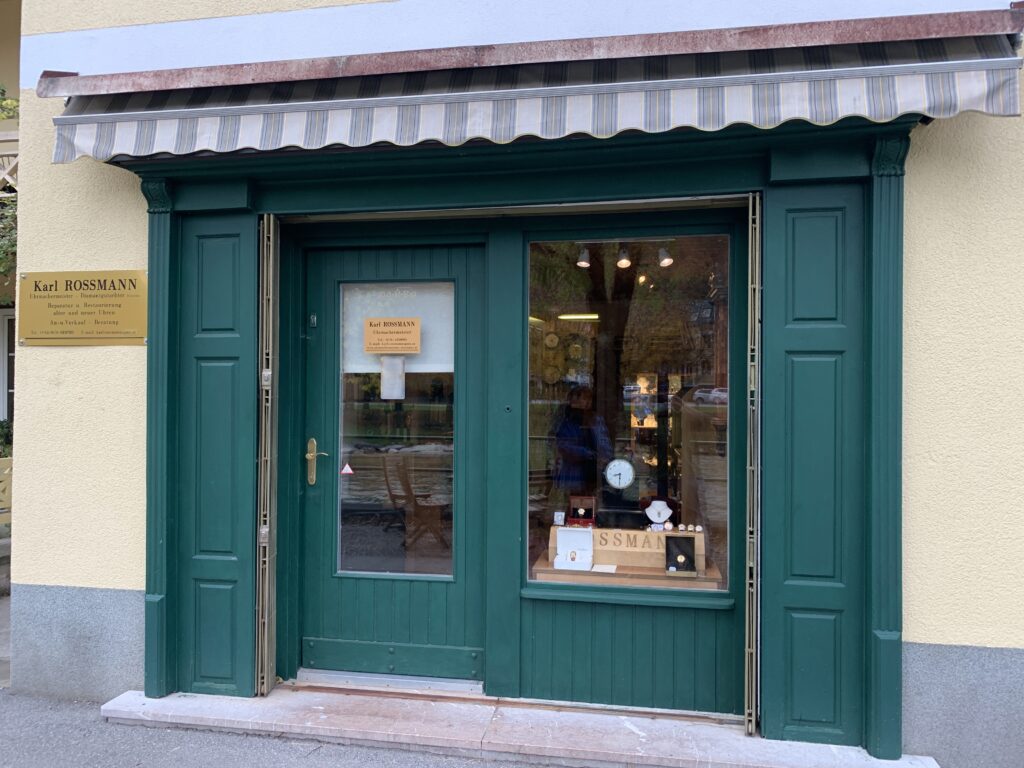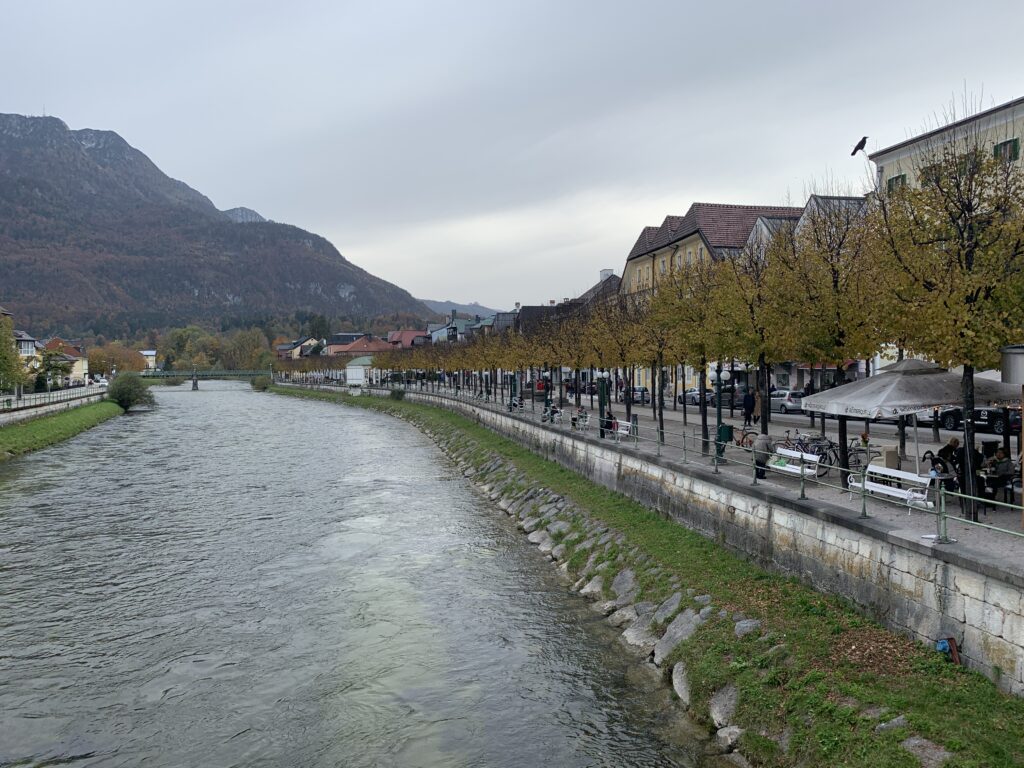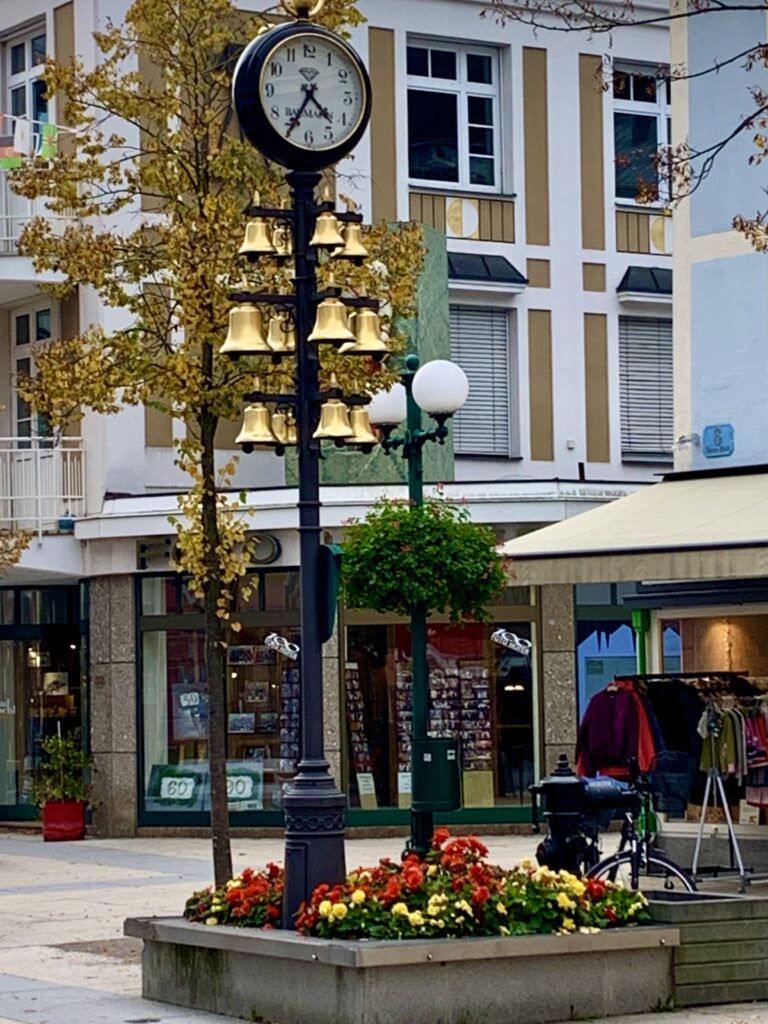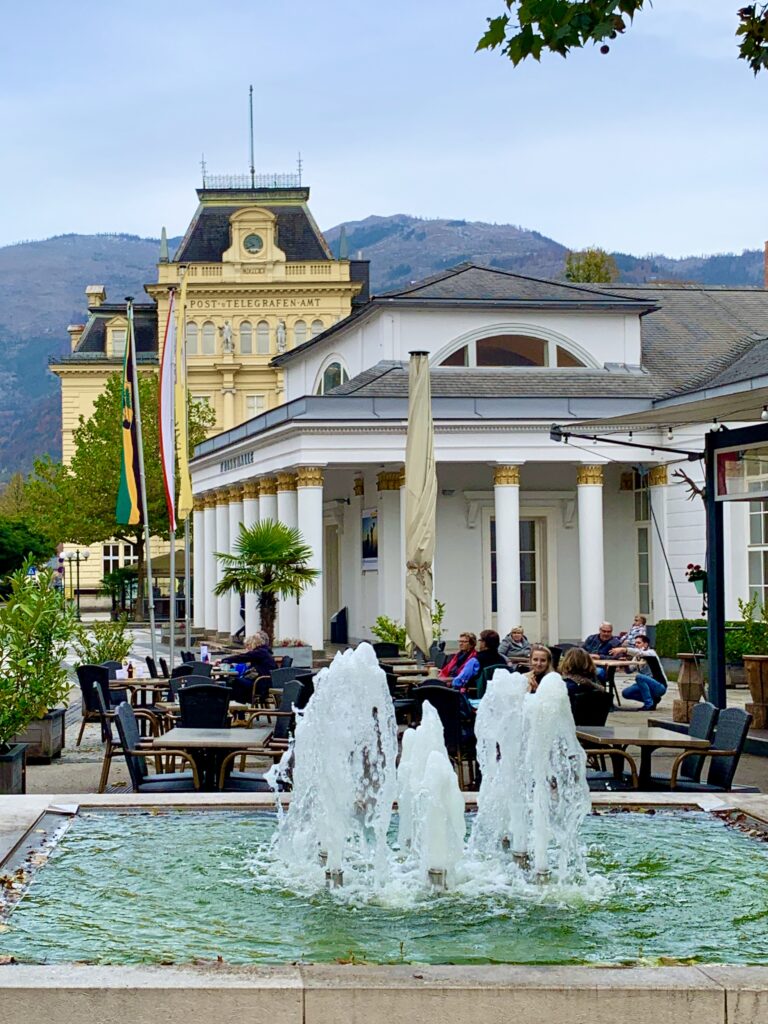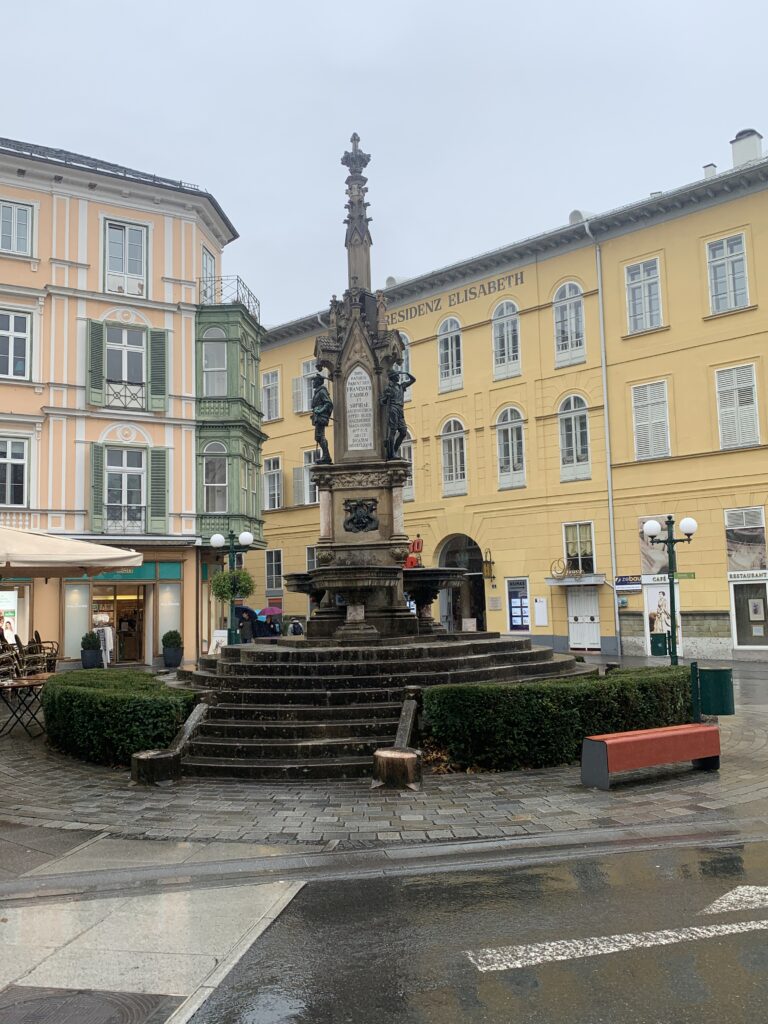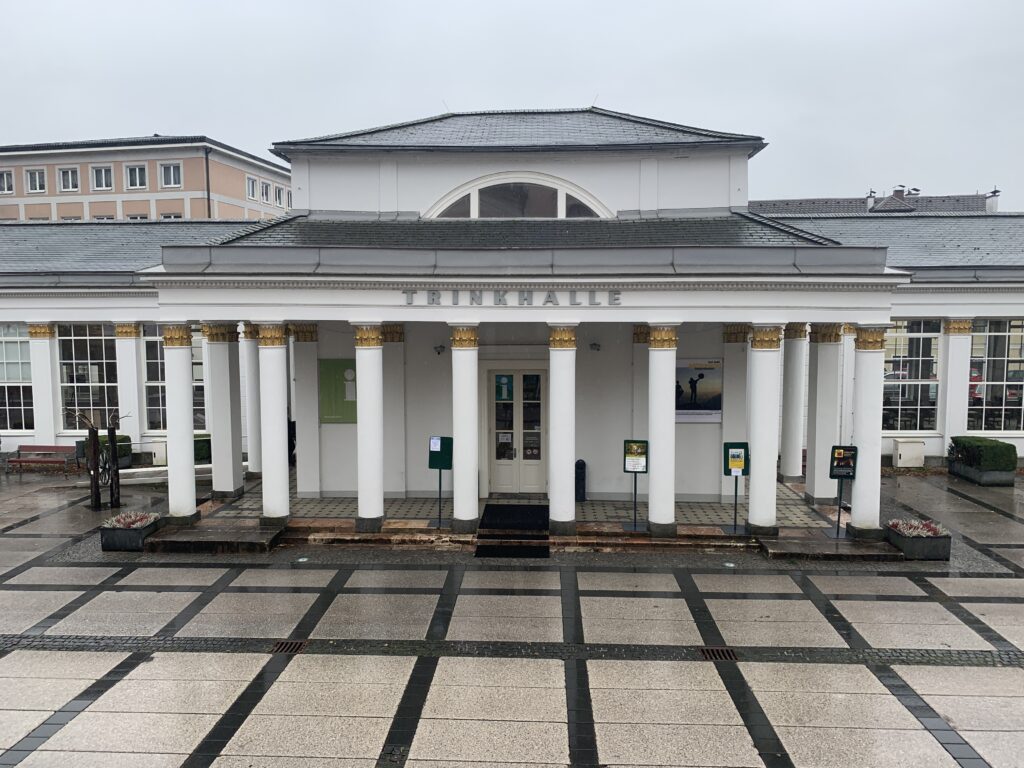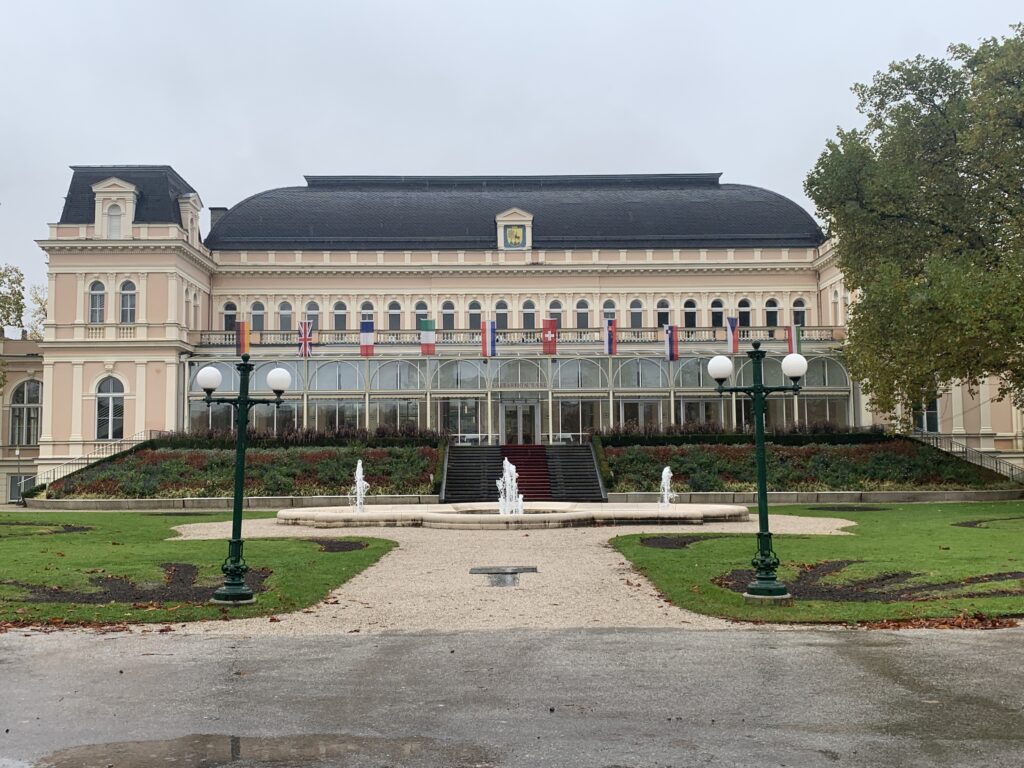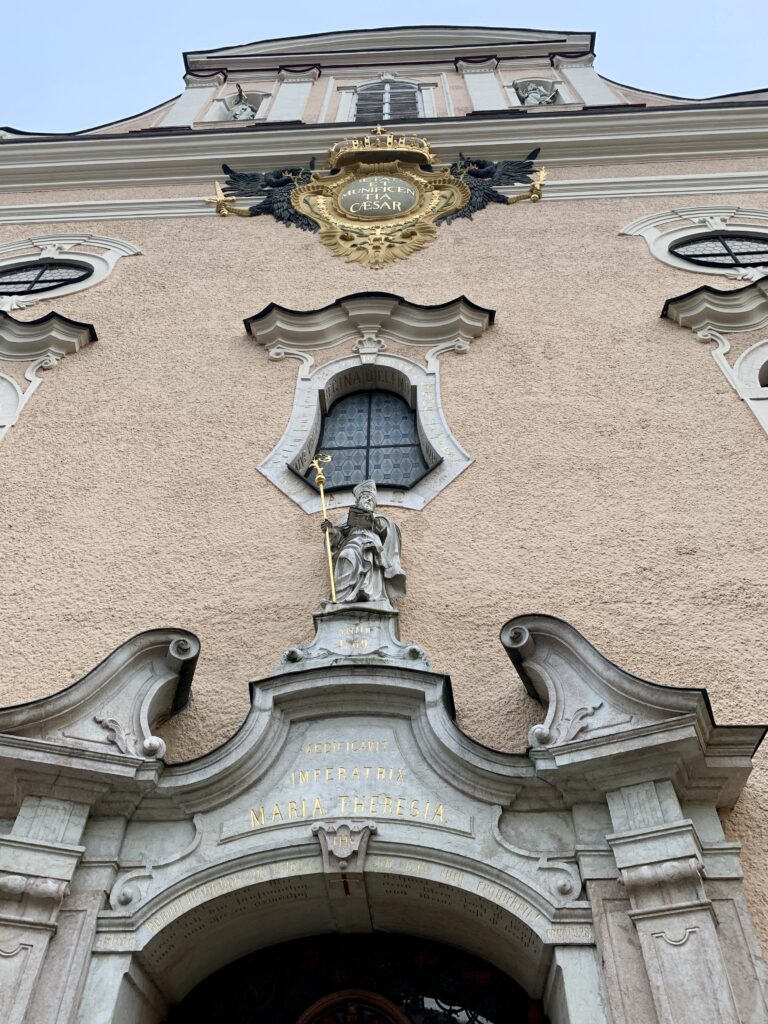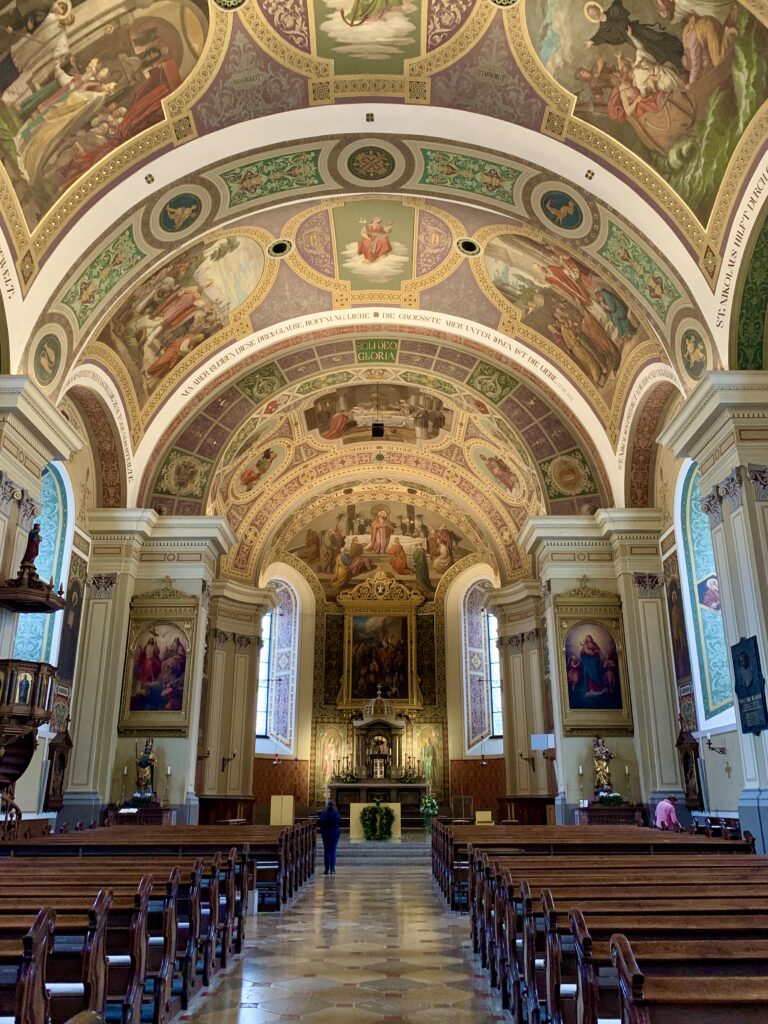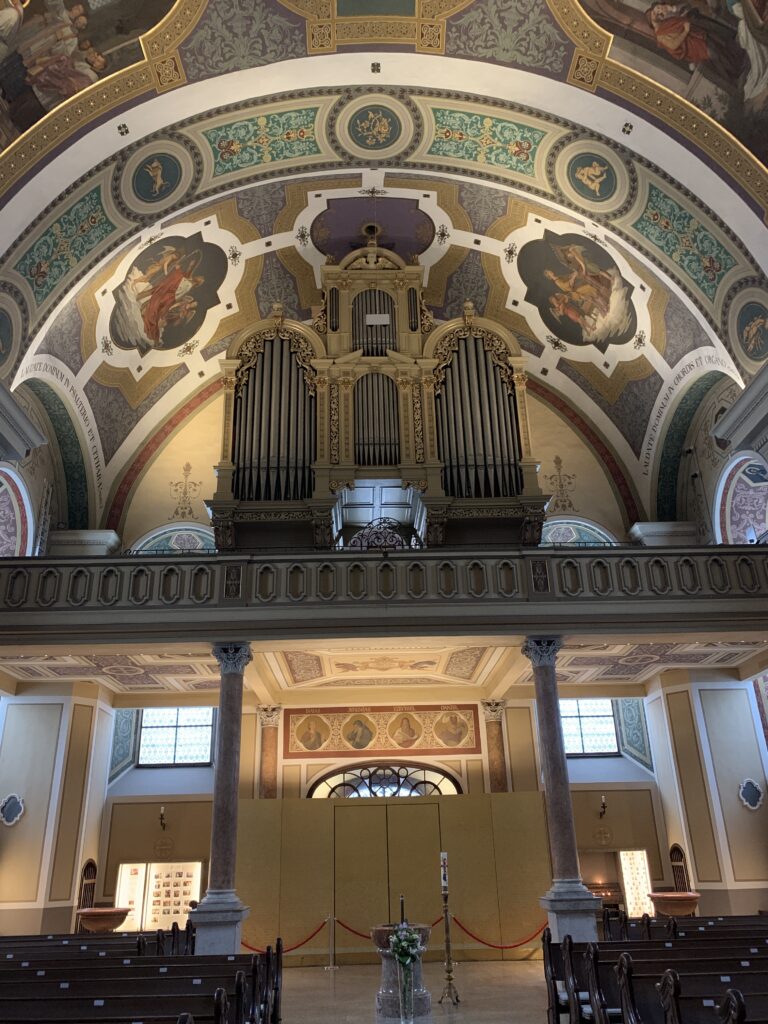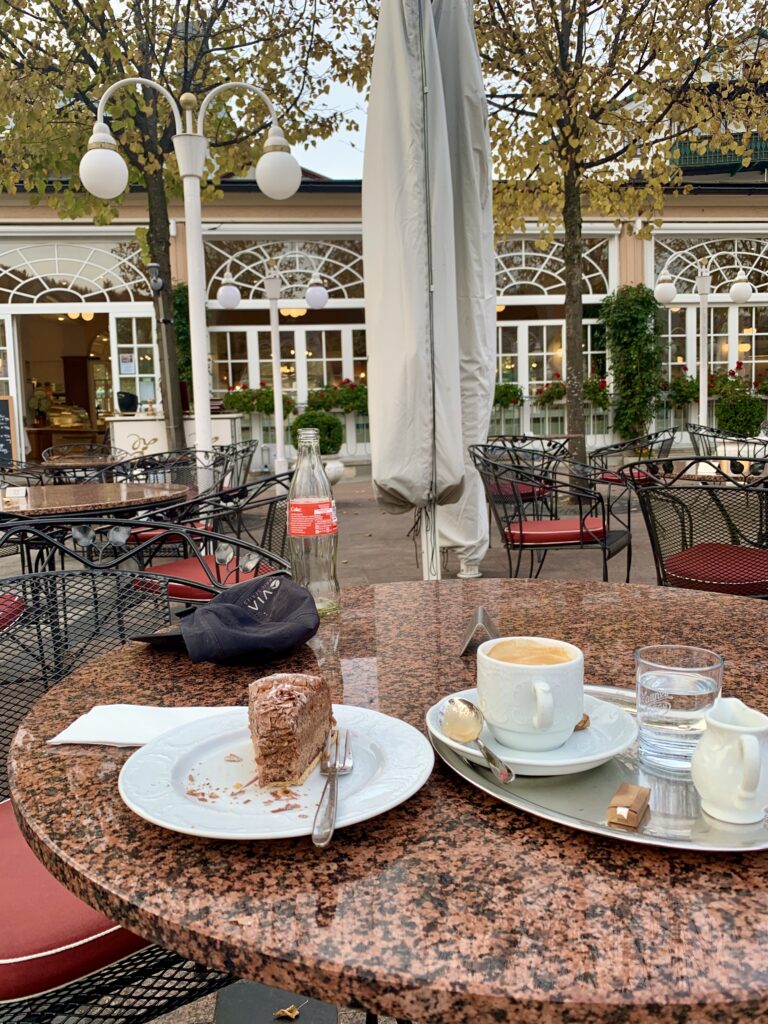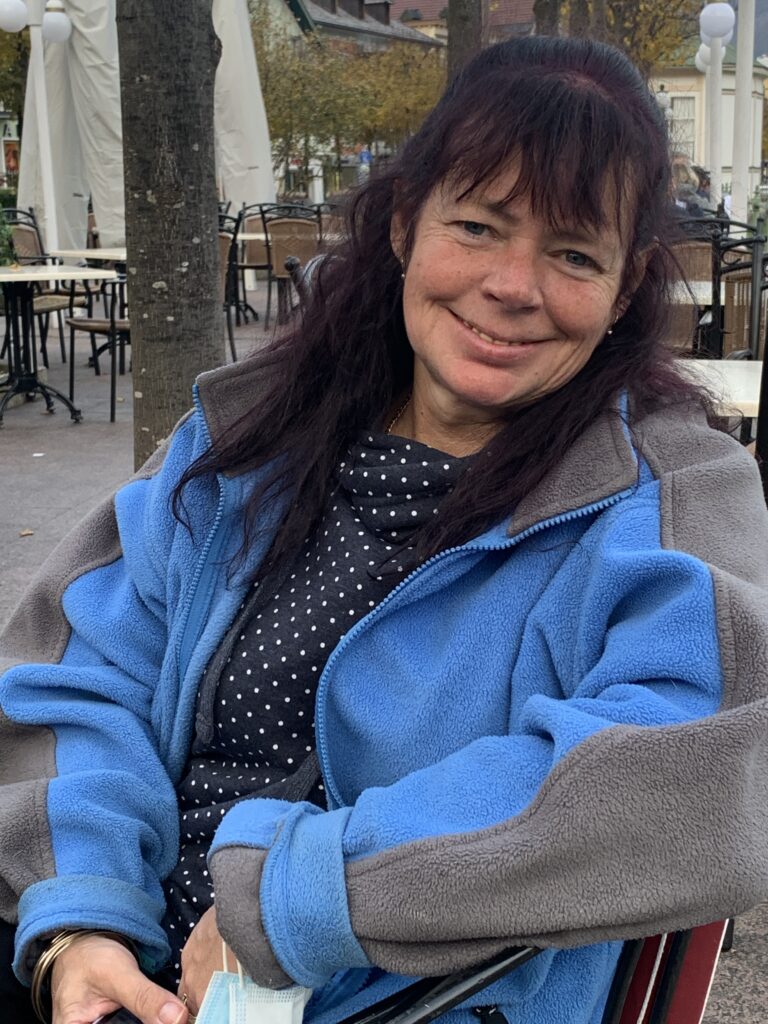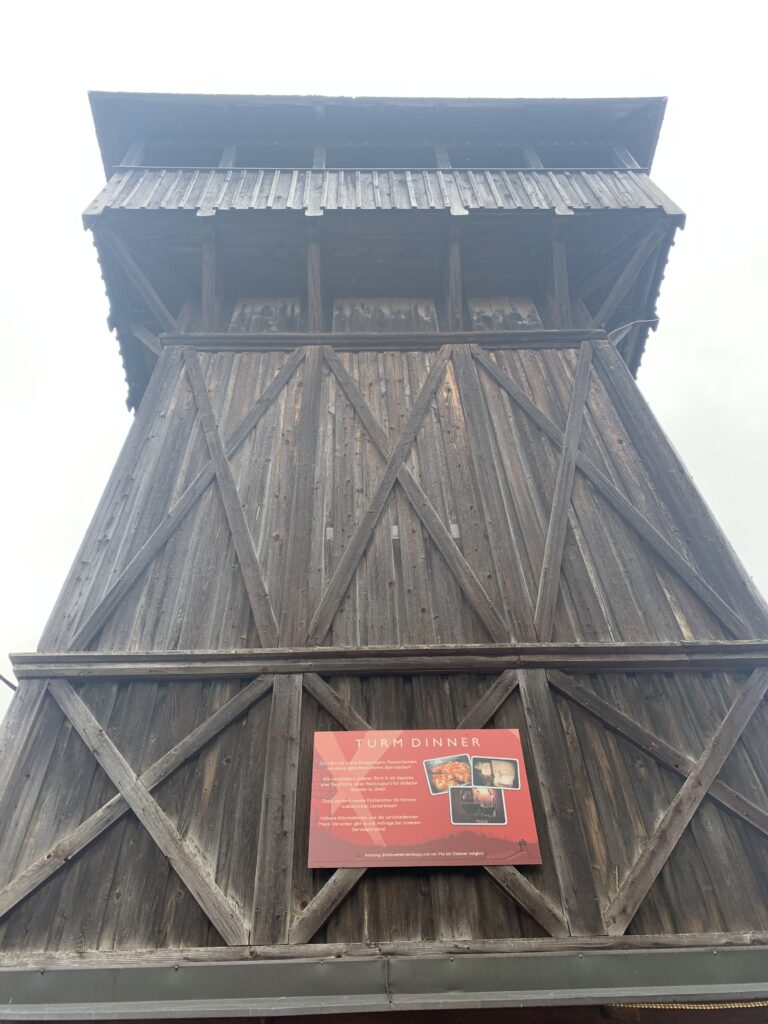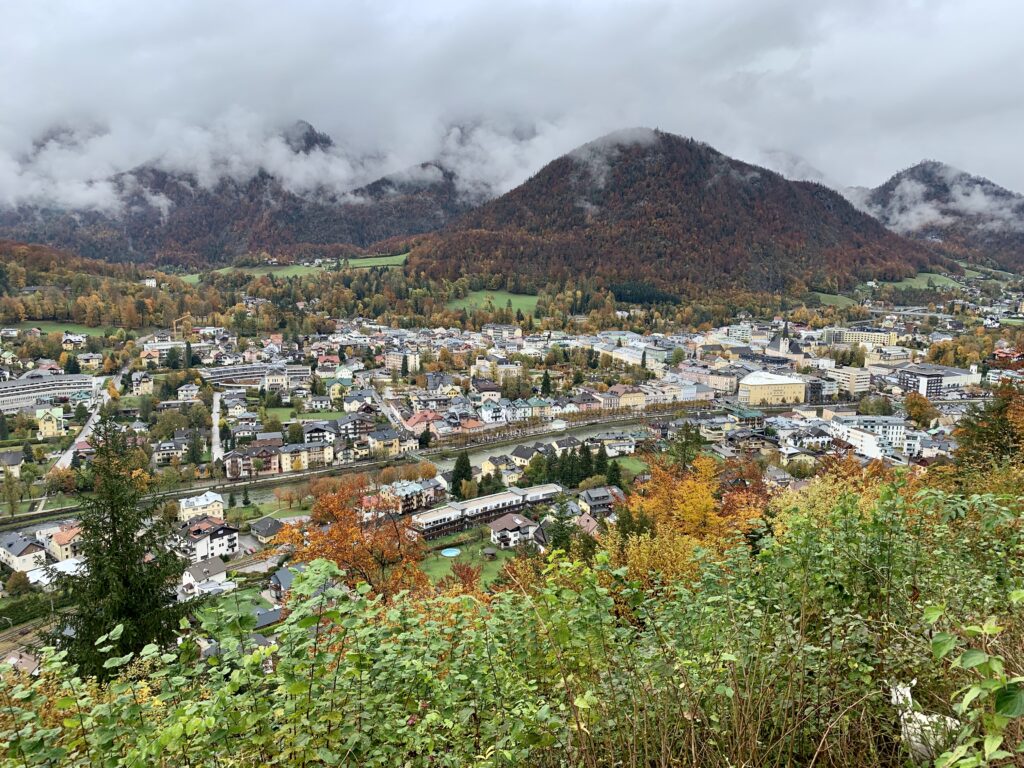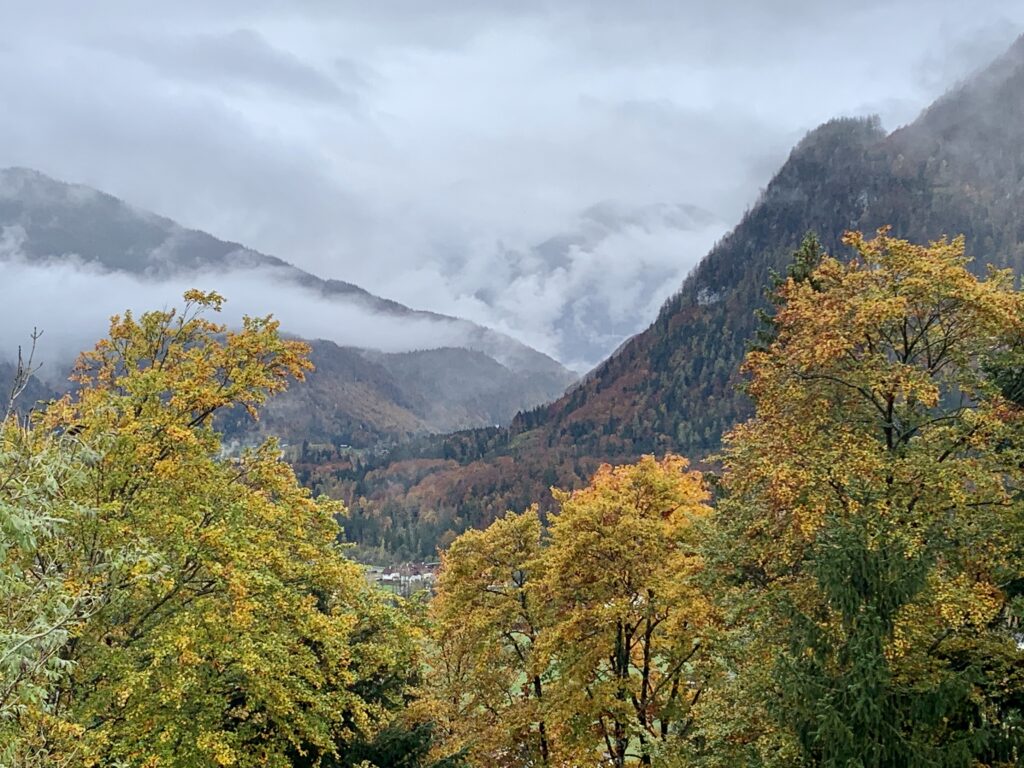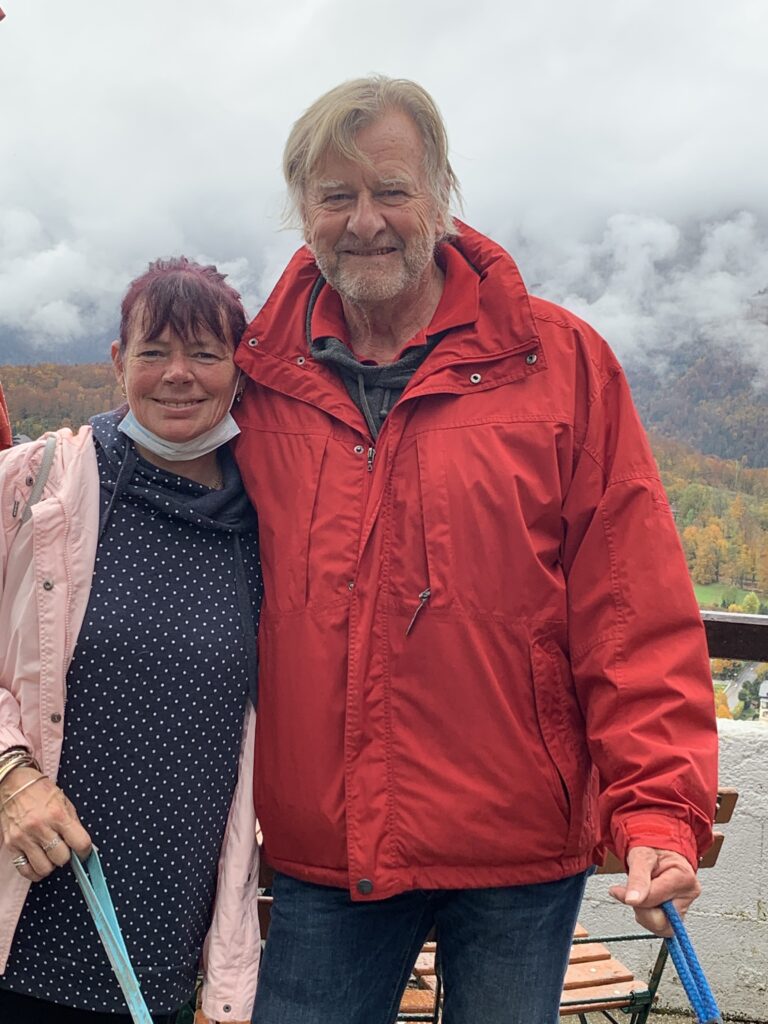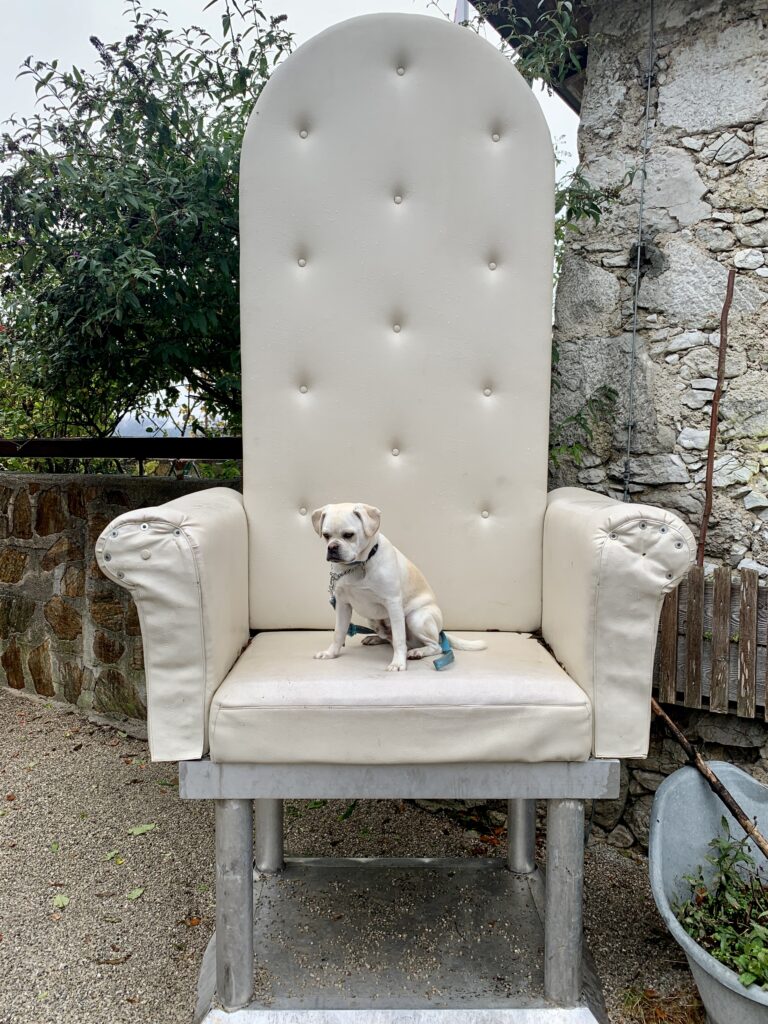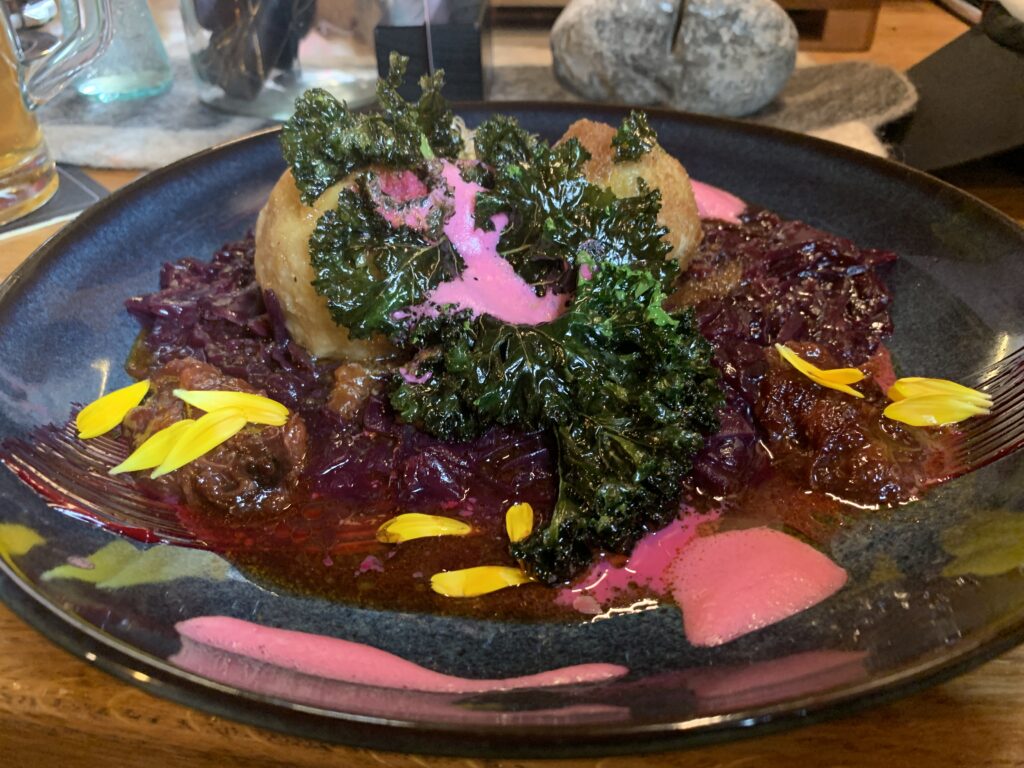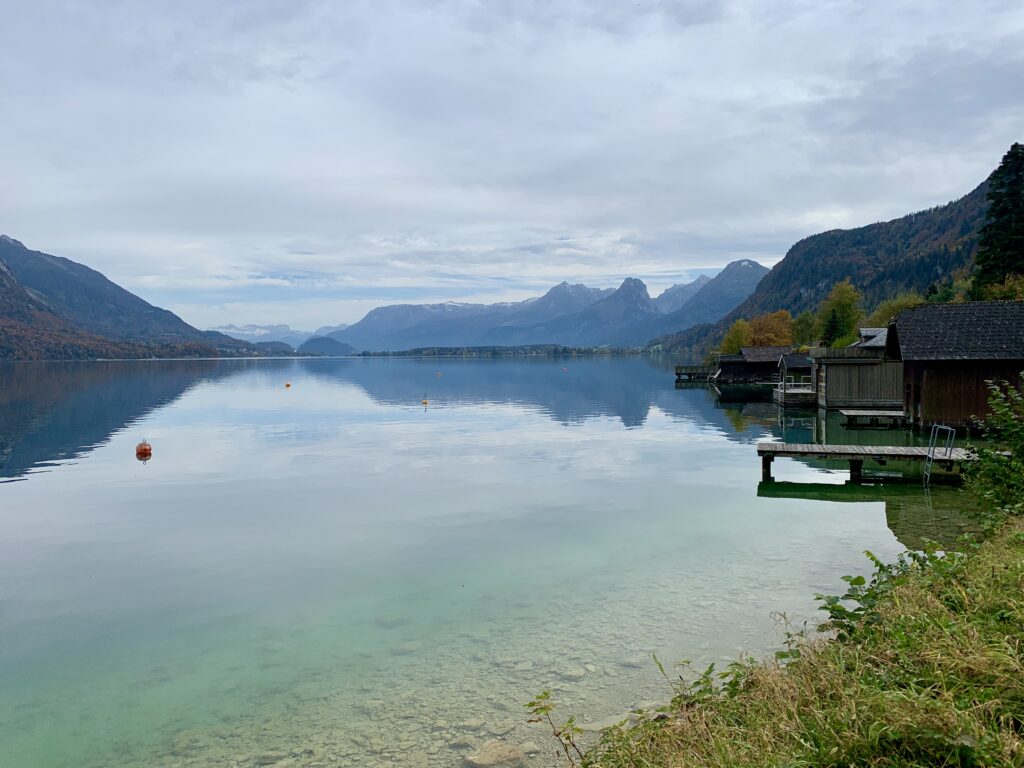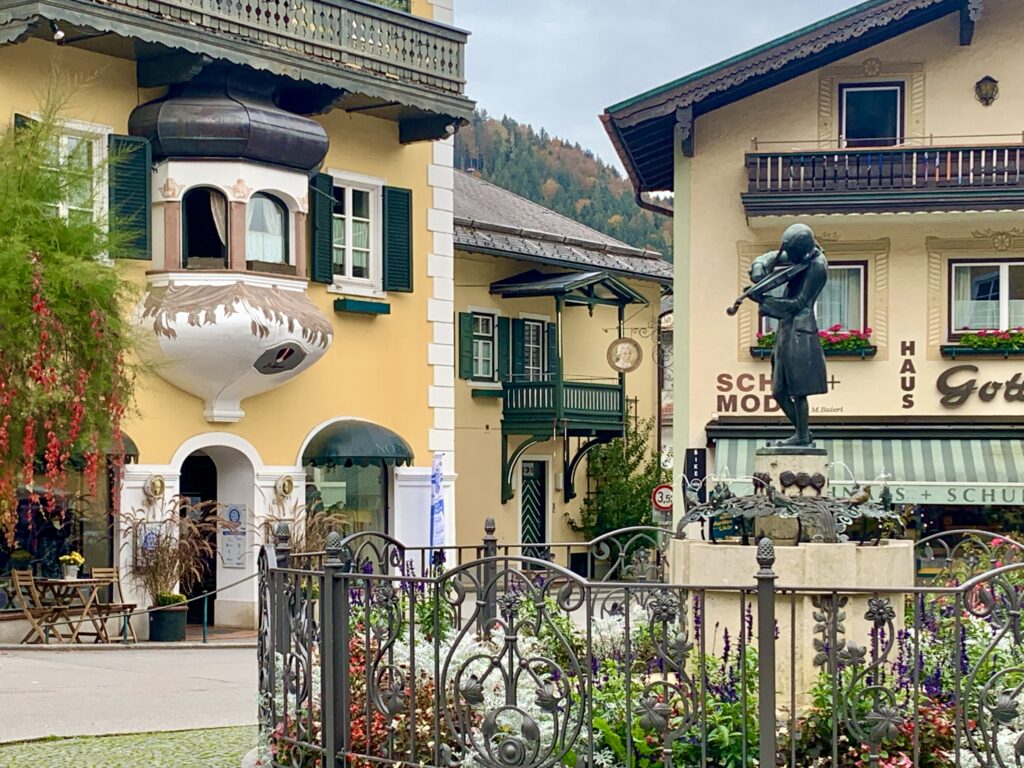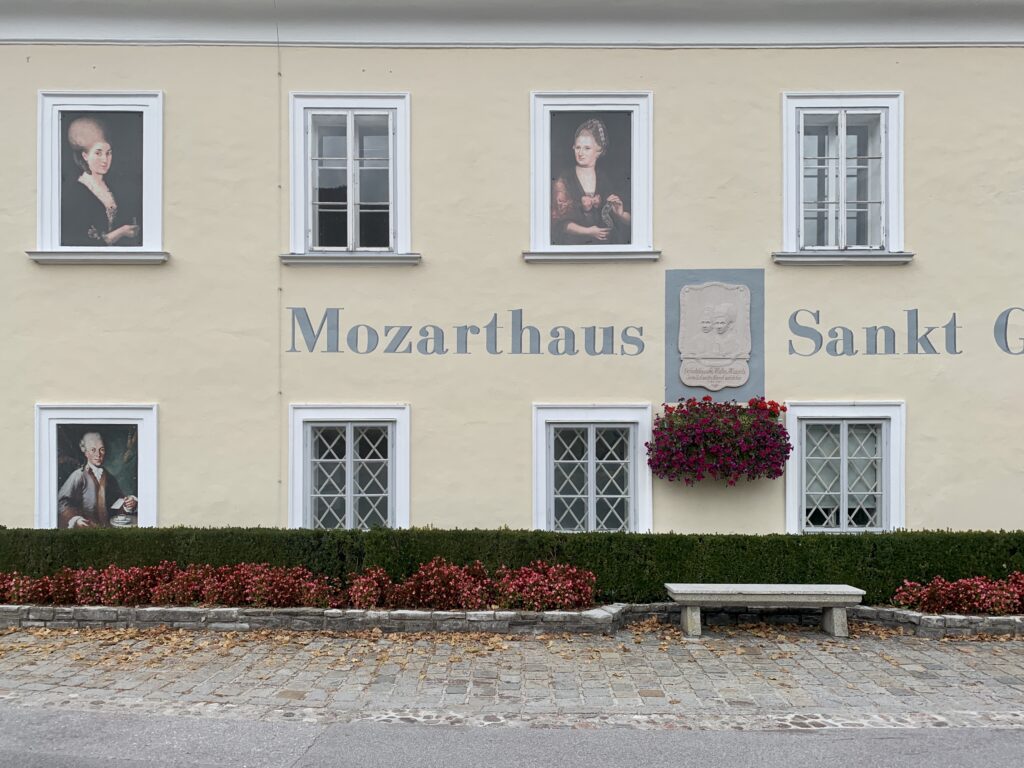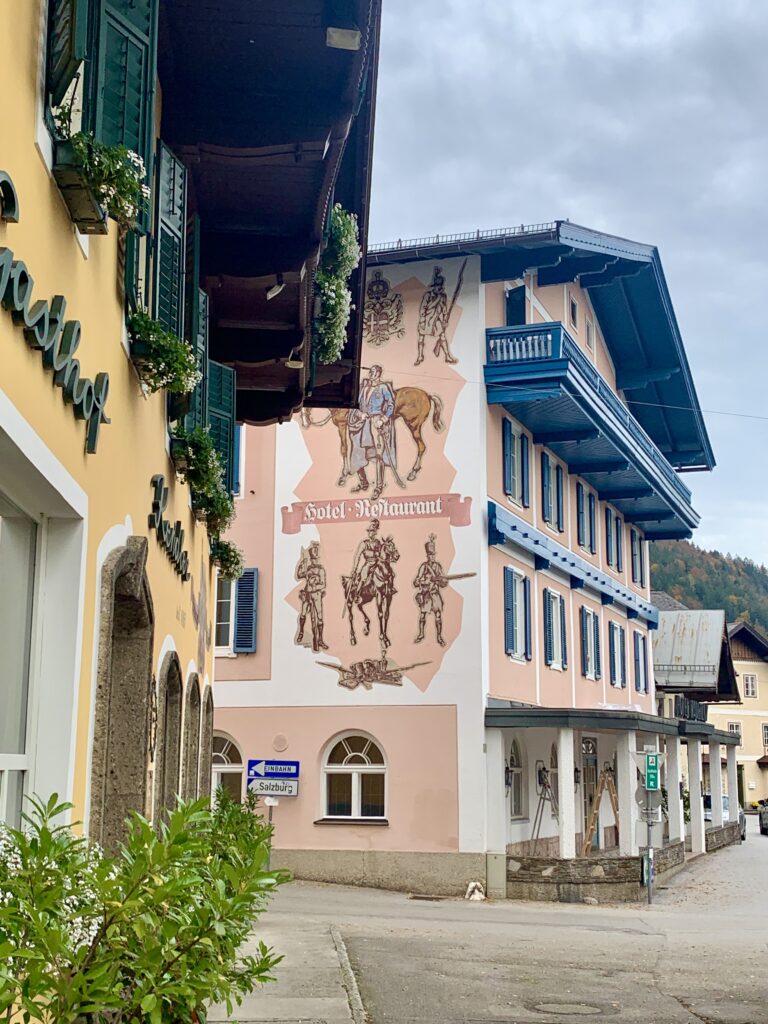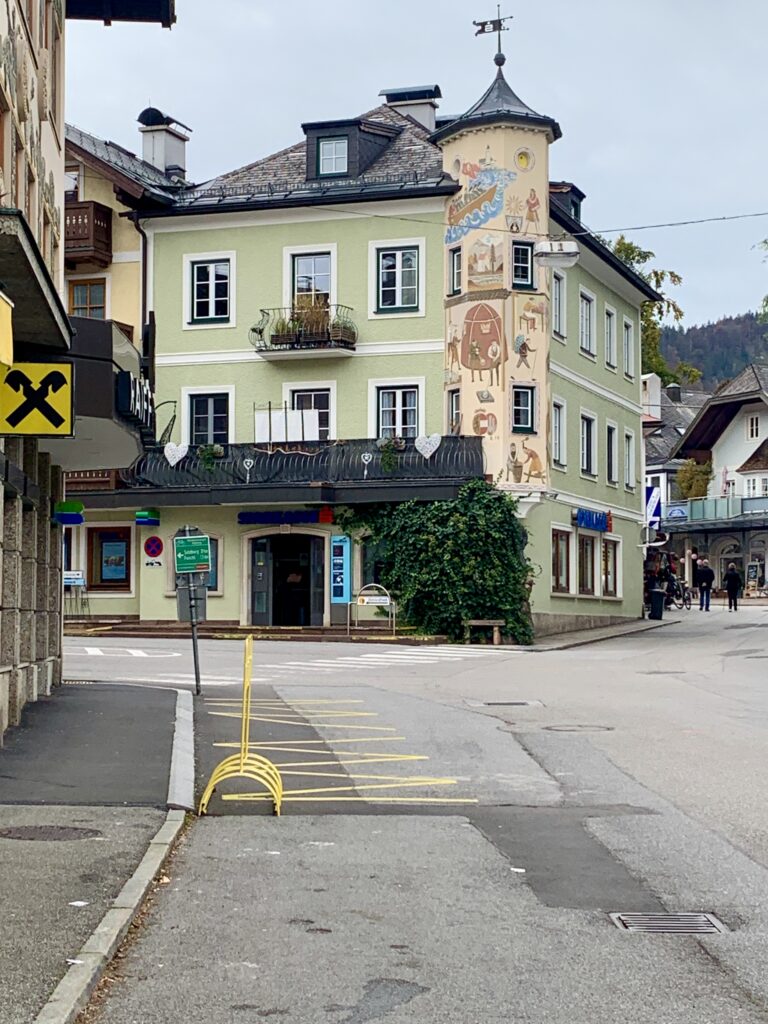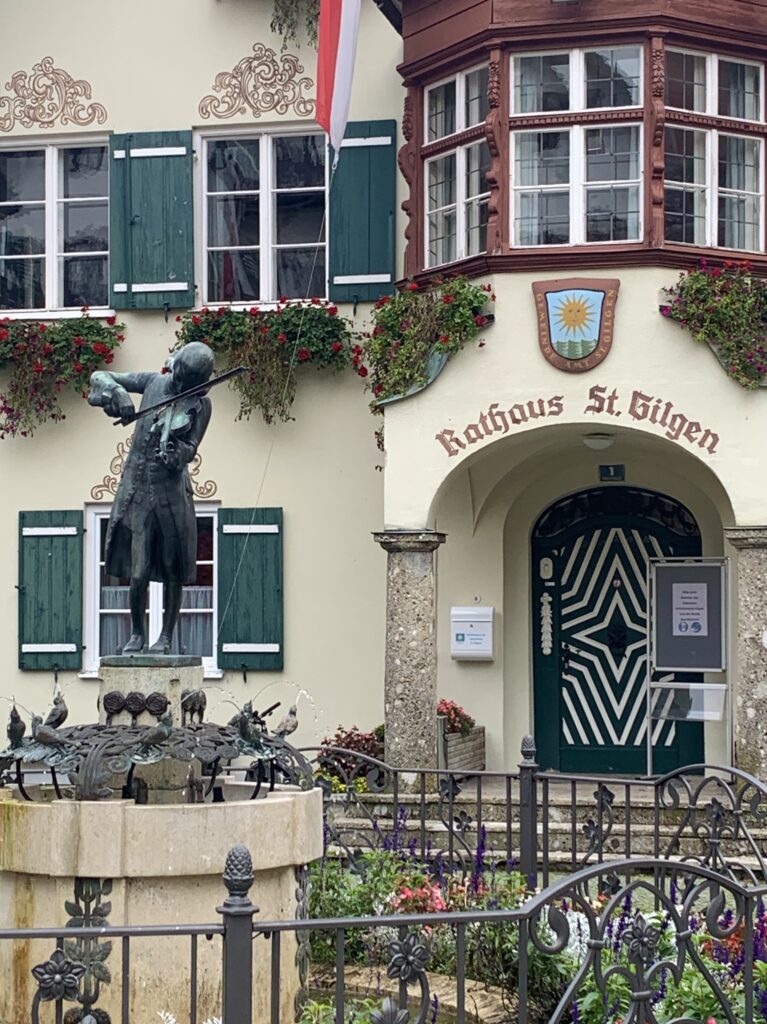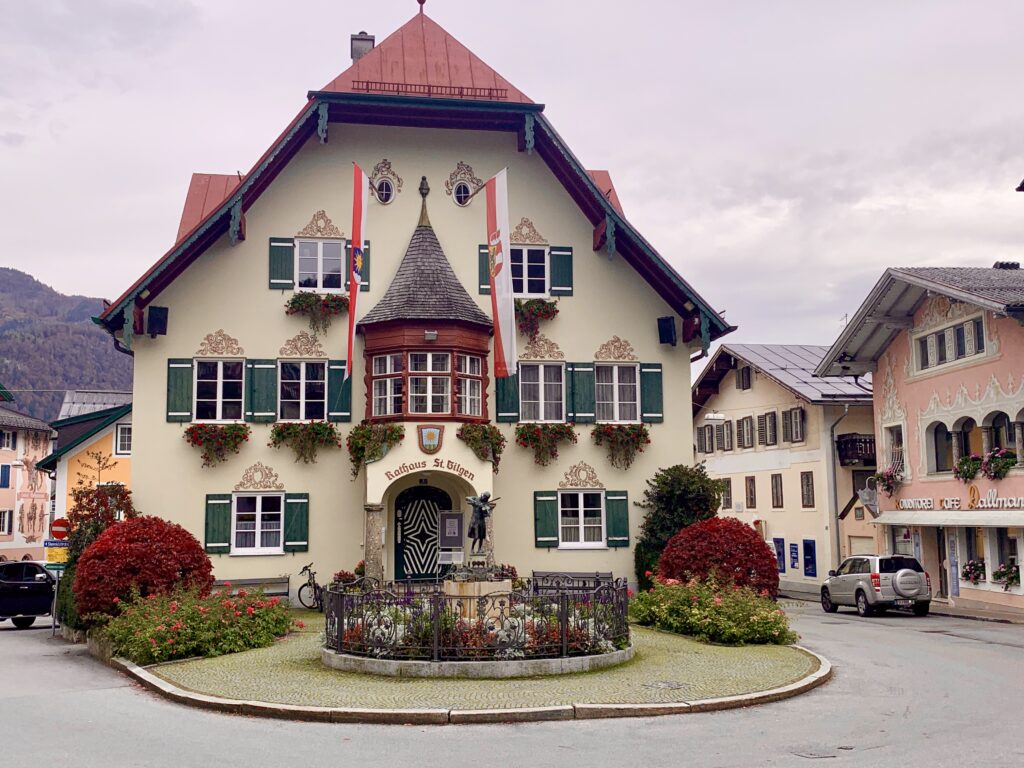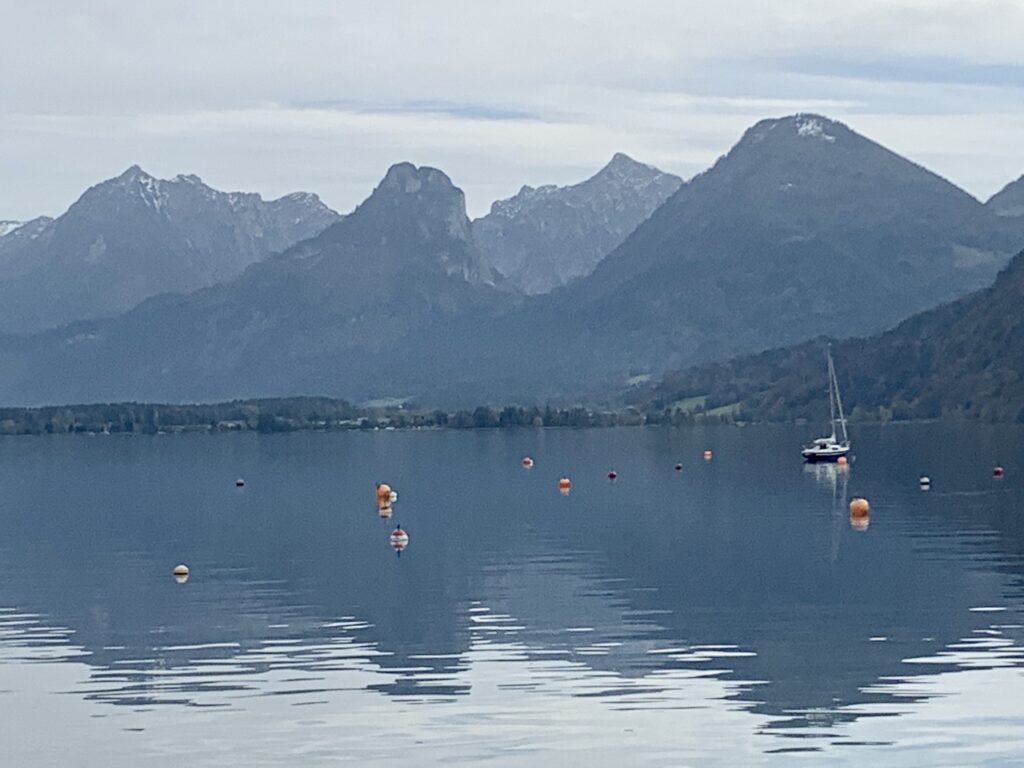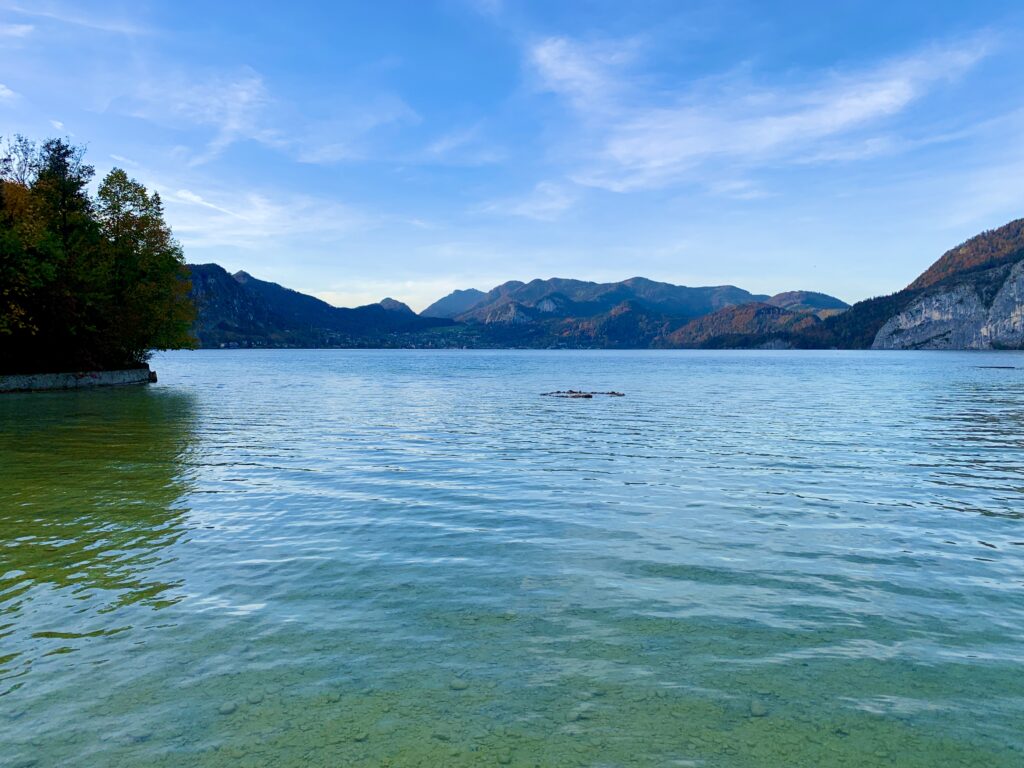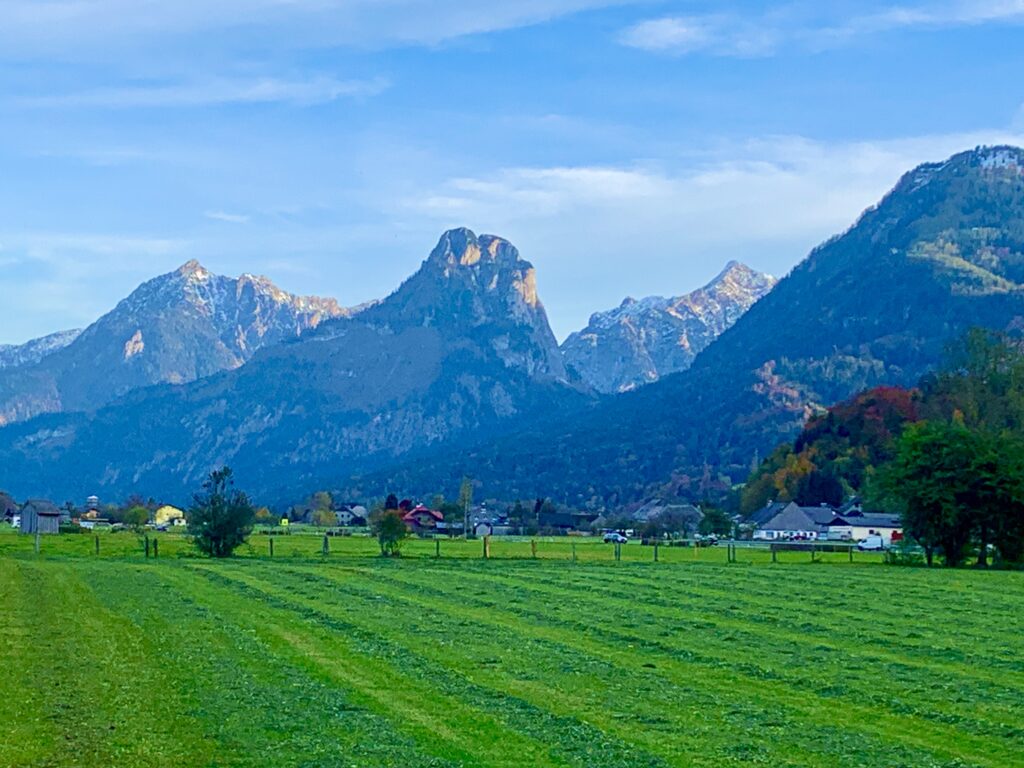Situated at the southern end of the Romantic Road, within walking distance of the Austrian border, Fussen is a small, pretty town on the banks of the River Lech with a history of violin and lute making (you can learn all about that in the town’s museum). Don’t get too excited about the Romantic Road – there is nothing in the least romantic about the road(s). It is simply a 300 mile mix of roads between Wurzburg and Fussen, stylized by a group of travel agents in the 1950’s who were out to promote Bavaria.
None of the above is to suggest you shouldn’t visit the area and especially Fussen. Fussen has it all – a medieval old town complete with it’s own castle (the Hohes Schloss), sitting in the shelter of the Ammer Mountains amongst numerous lakes. It is a very pretty town and well placed for visits to other similarly pretty towns and, of course, to at least two very famous castles, the Neuschwanstein and Hohenschwangau Castles.
I walked from Brunnen to Fussen along a good path on the banks of the Forggensee, passing through the villages of Schwangau and Horn on the way. The weather was brightening all the time and the walk was delightful, taking no more than an hour and a quarter even allowing for photo stops. A walkers path goes all the way around the Forggensee but I imagine that walk would take about 6 hours. It’s a sizeable lake.
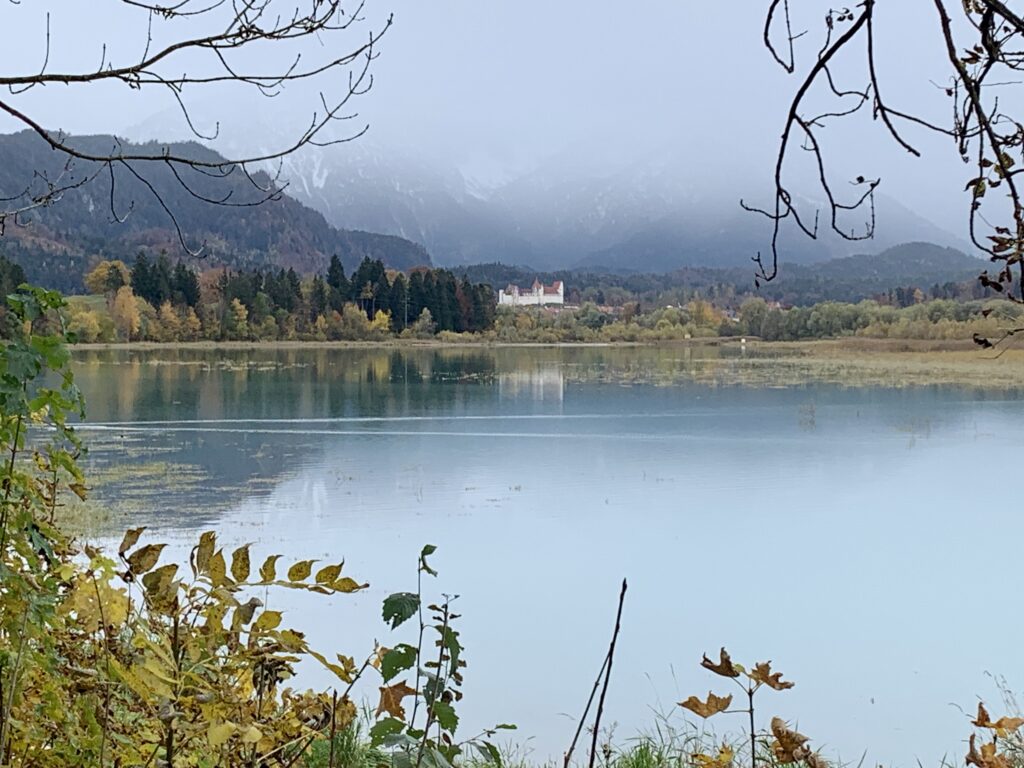
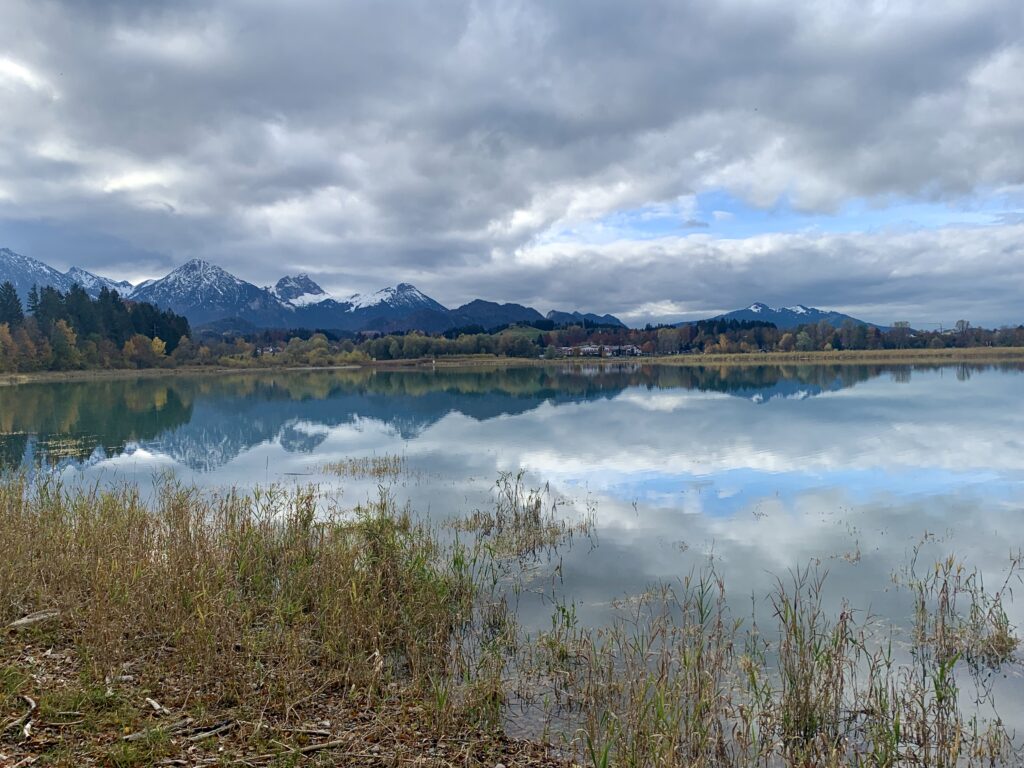
The old town in Fussen is small but enchanting. It could probably be walked in an hour or so but I was keen to make the most of it and took the best part of 4 hours strolling the old town, the castle, the Lechtfall, the Baum Garten and the town’s principal churches.
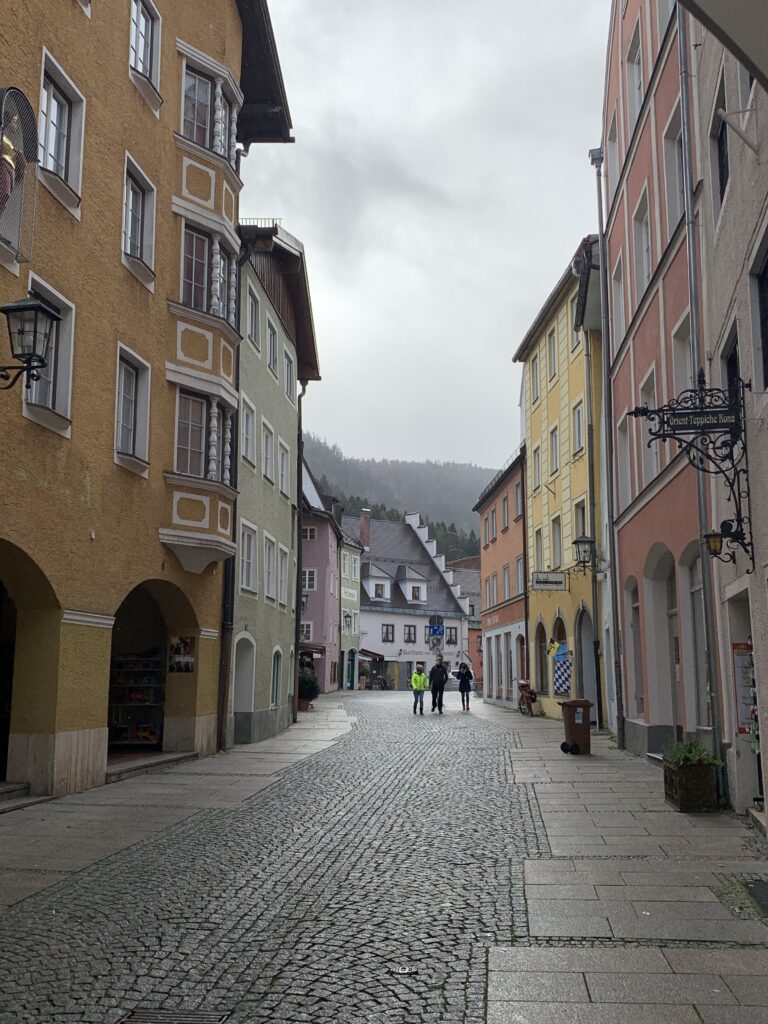

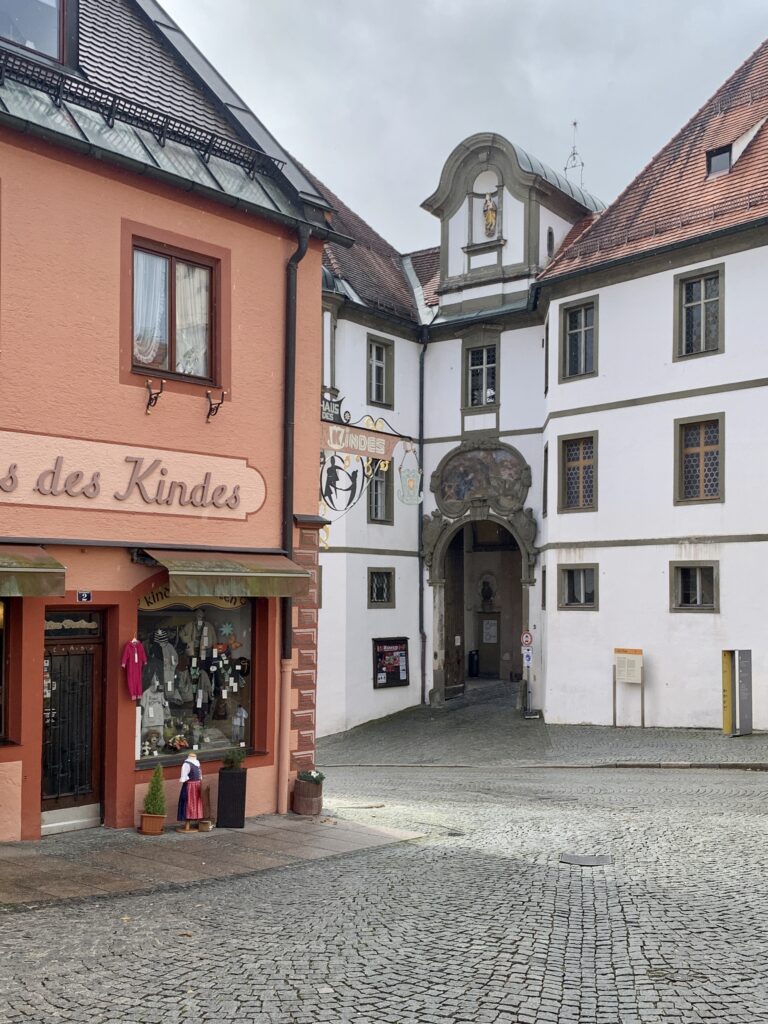
For me, Die Heilig Geist Spitalkirche (the Church of the Holy Ghost) stands out from the others in the town as being one of the most unusual and impressive churches I have seen. The original 15th century church was destroyed in a fire in 1733 and when it was rebuilt a few years later, it was constructed in the style of the monastery church of the Franciscans of Dillingen and with the exterior being adorned with colourful frescoes.
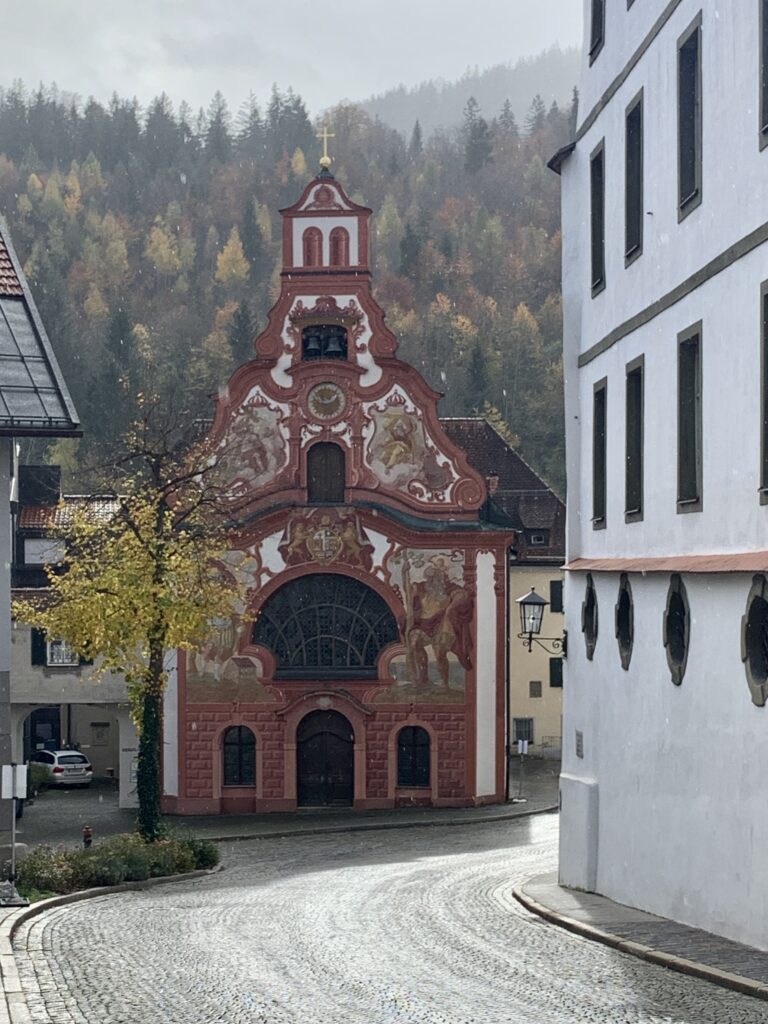
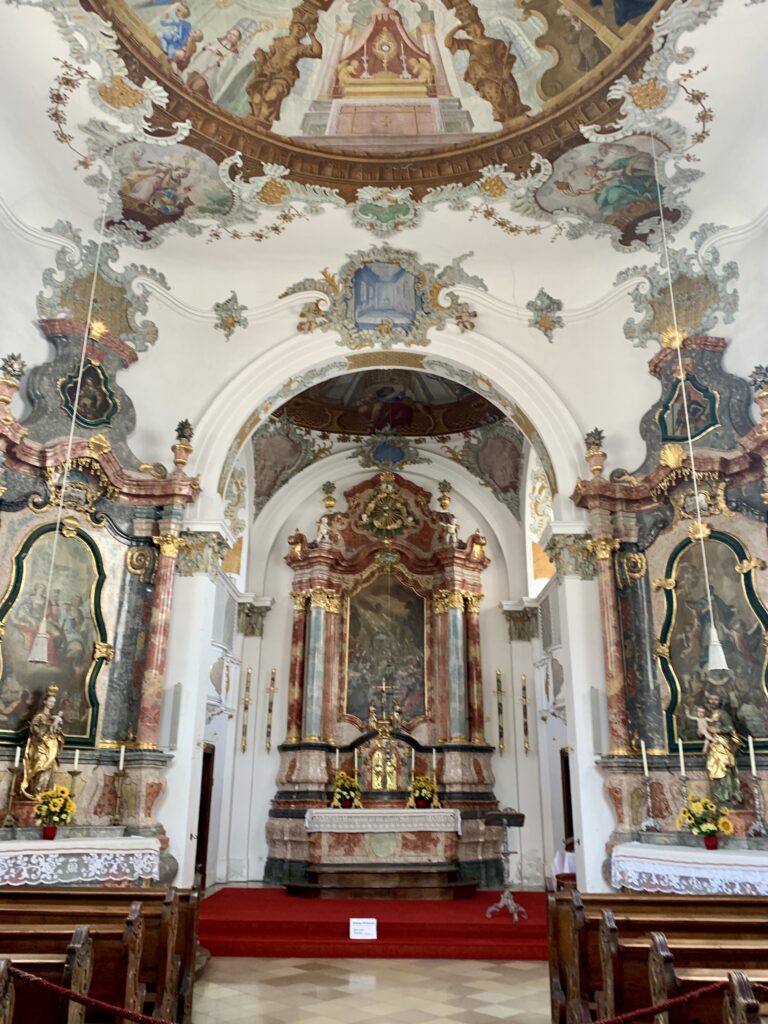
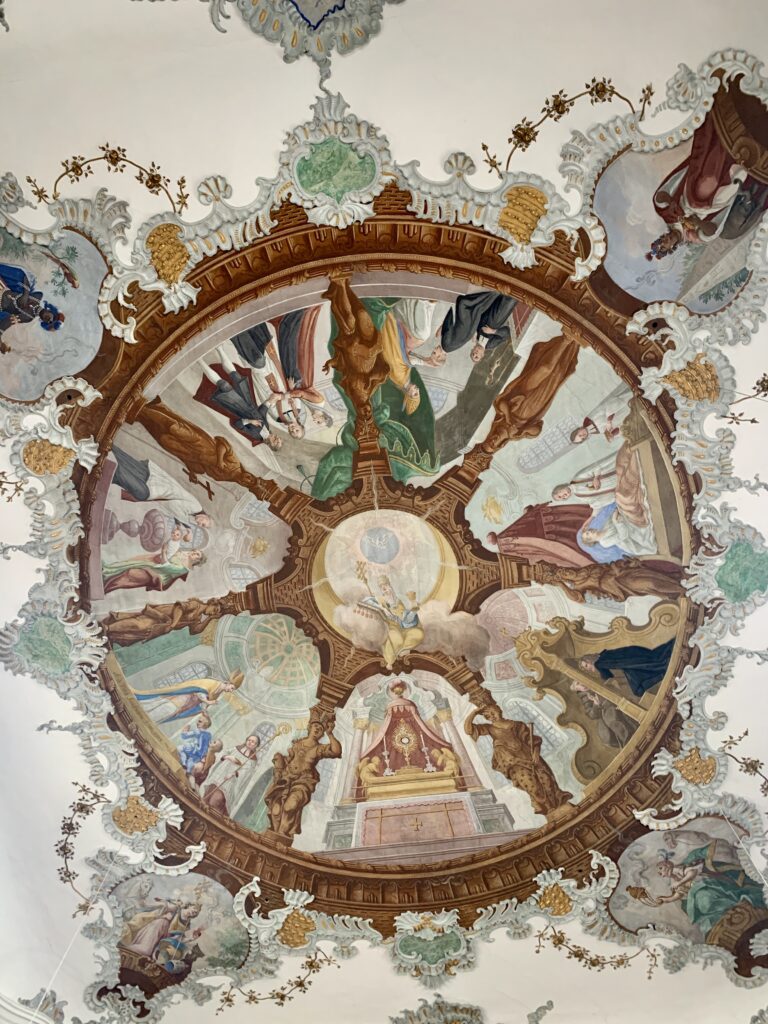
The high point of the town (quite literally) is the Hohes Schloss, a one time retreat of the Bishops of Augsburg, which sits alongside St Mang’s Abbey. Access to the castle courtyard (which is a masterpiece of illusion) is free but there’s a charge of 4 Euros to go inside the castle. It is worth 4 Euros for the views over the town alone but from inside you can also access the state art gallery.
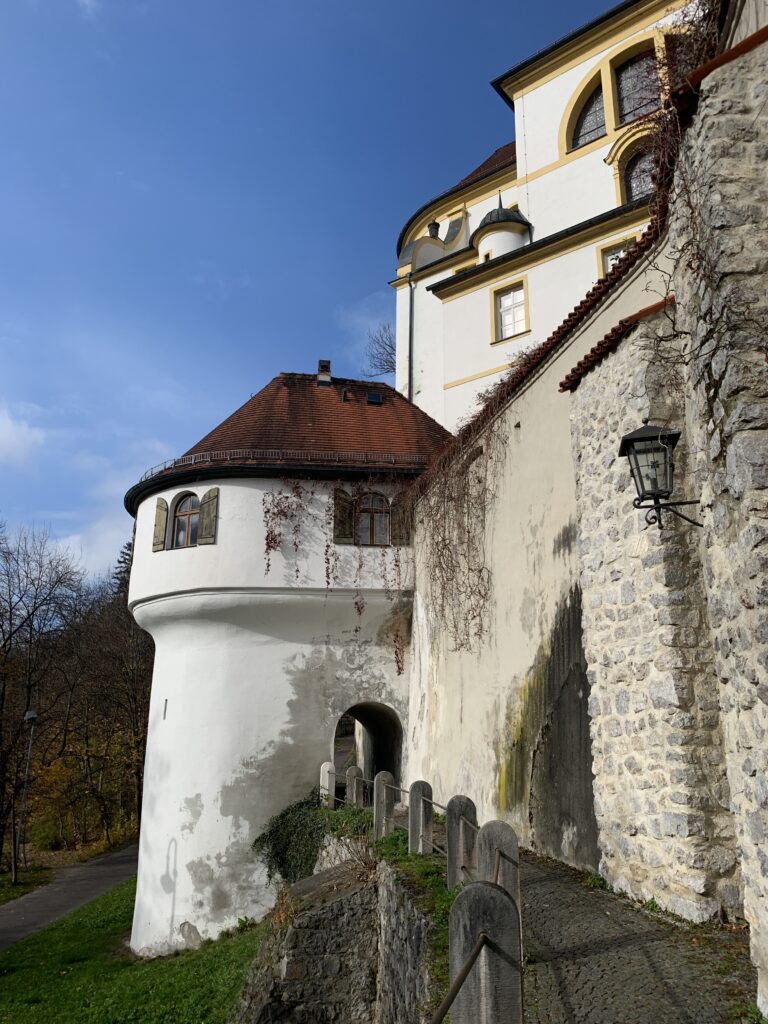
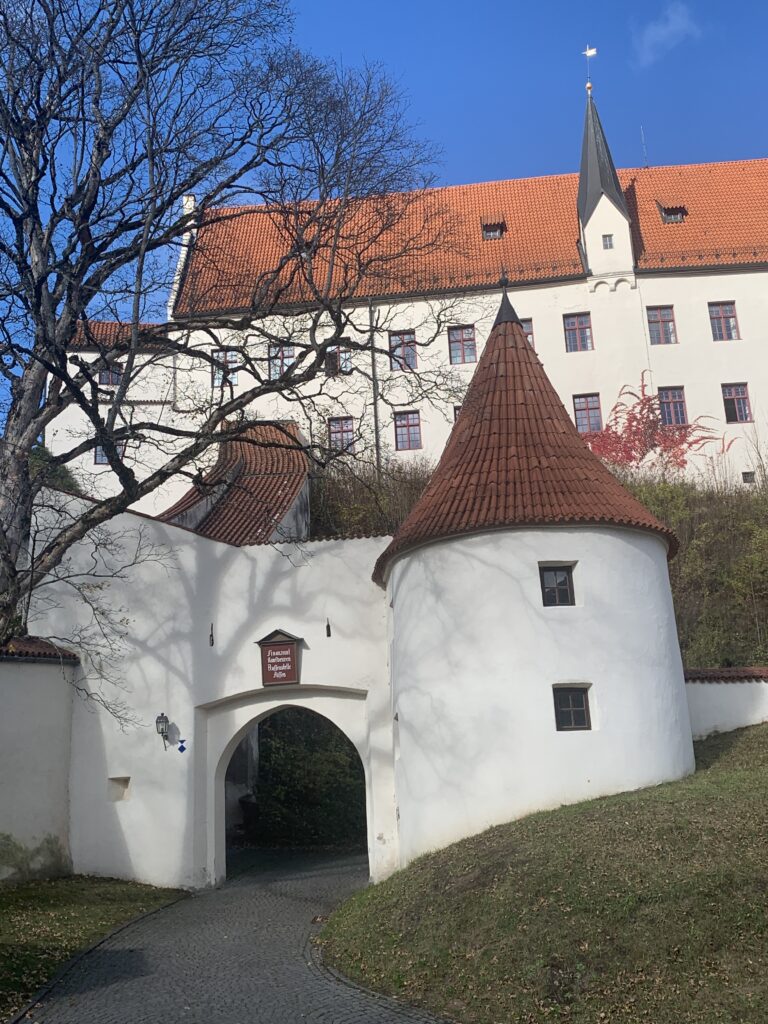
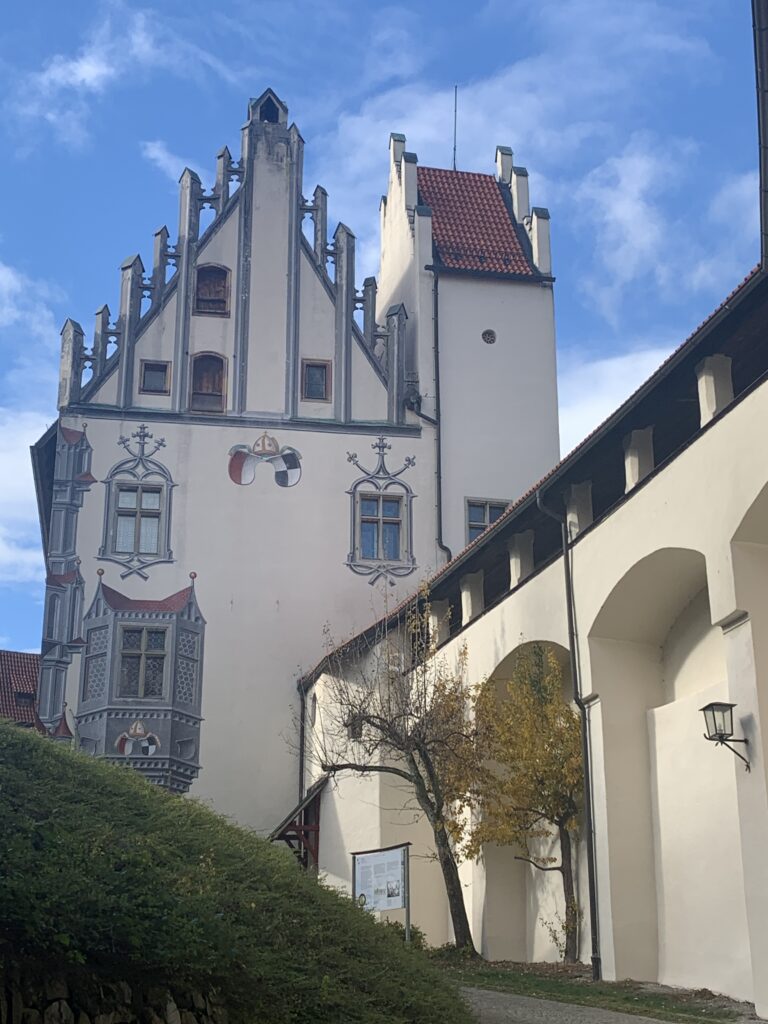
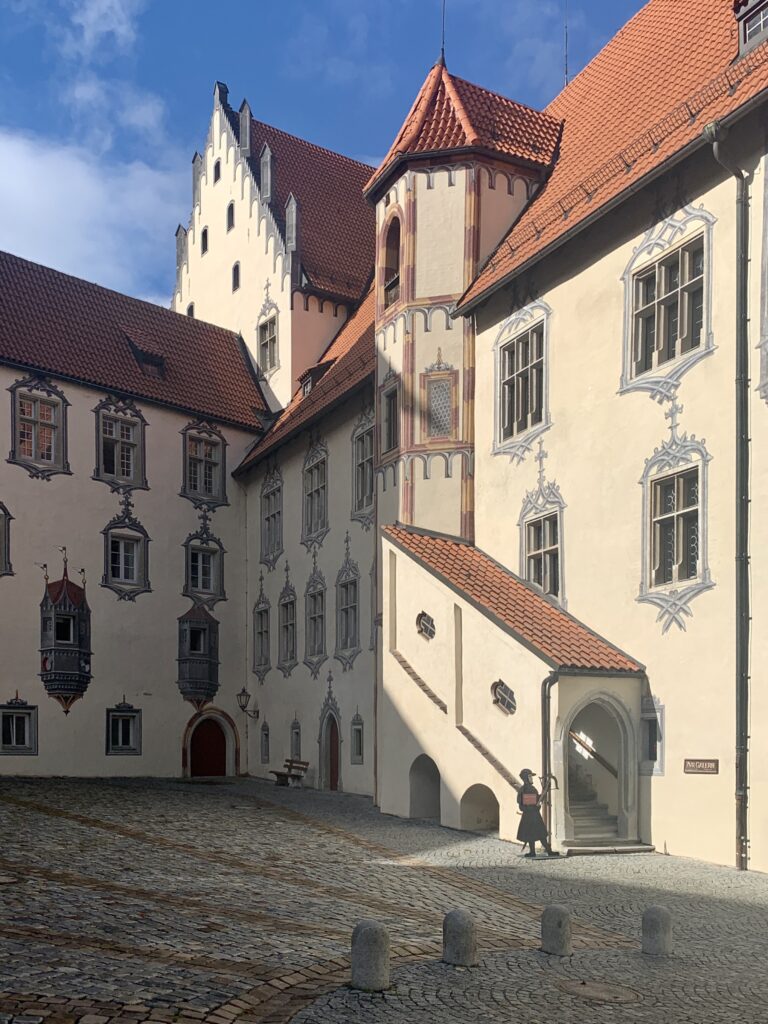

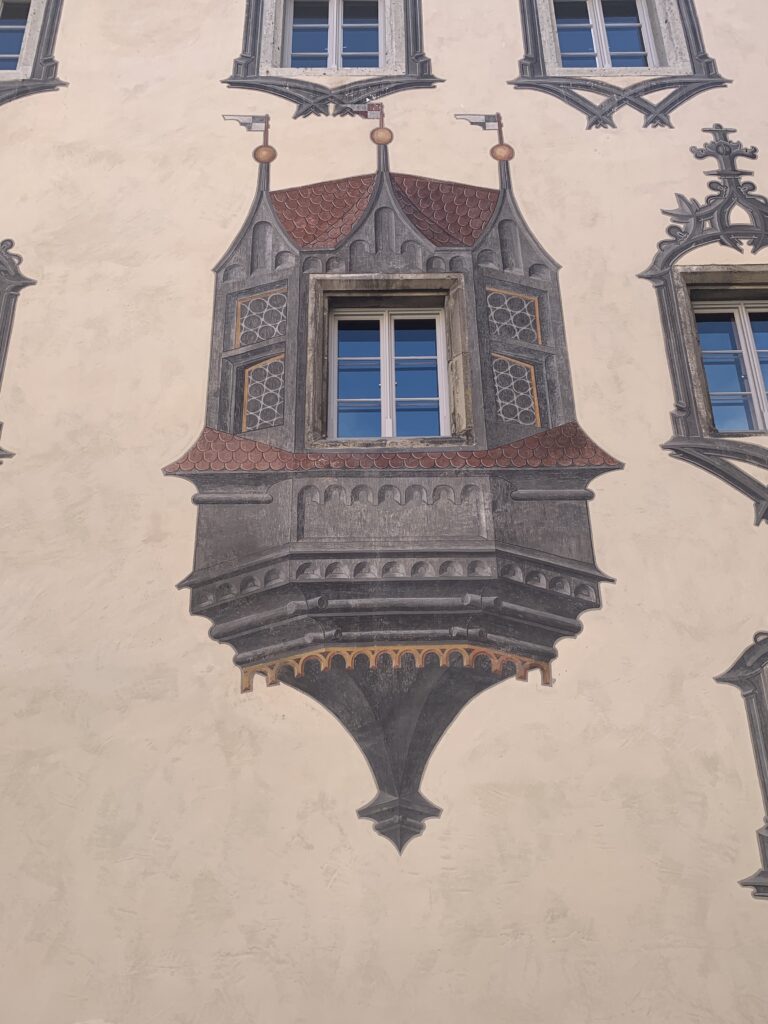
I found a cafe-bar before leaving Fussen and, while reflecting on the numerous photographs I had taken during the day, enjoyed a particularly good Apfel Strudel. That was always going to help me cover the ground back to the Van in no time.

